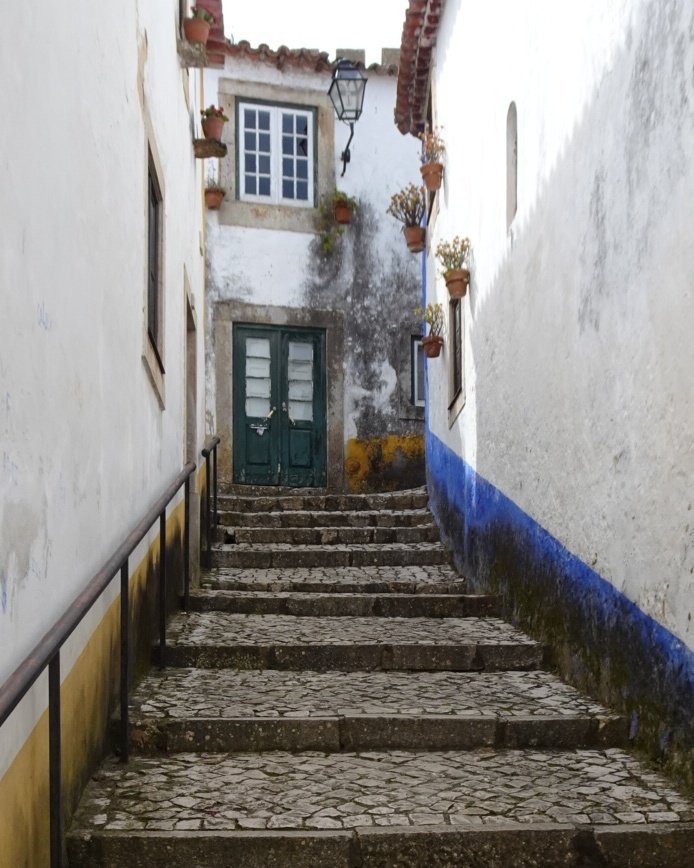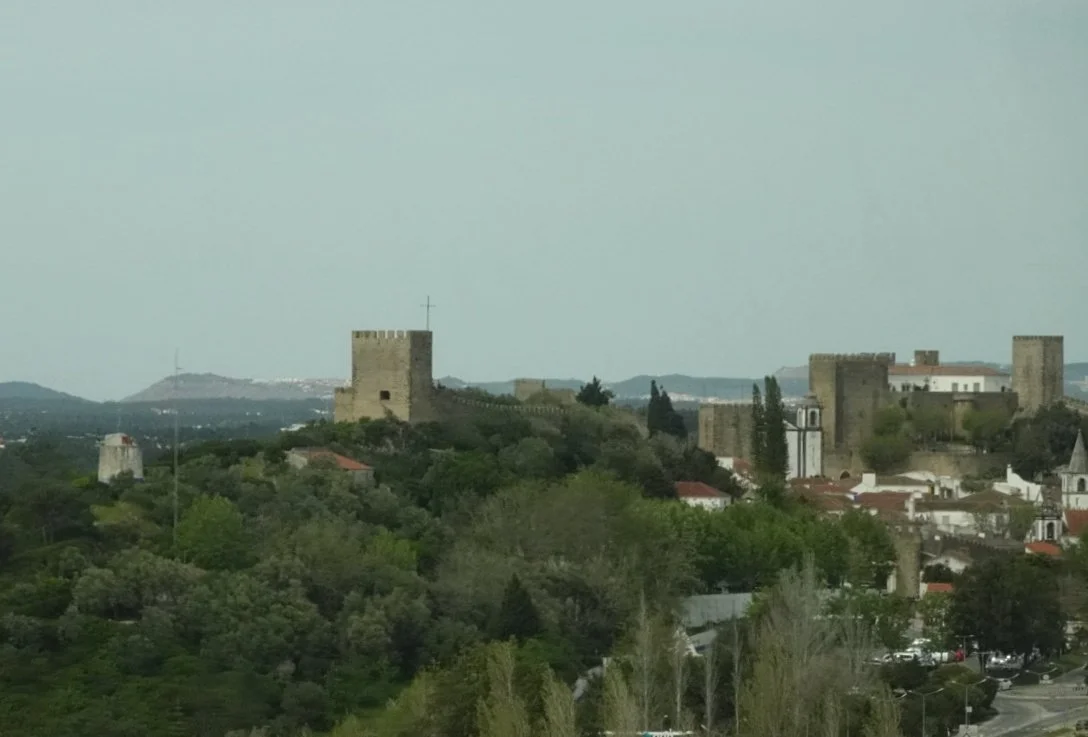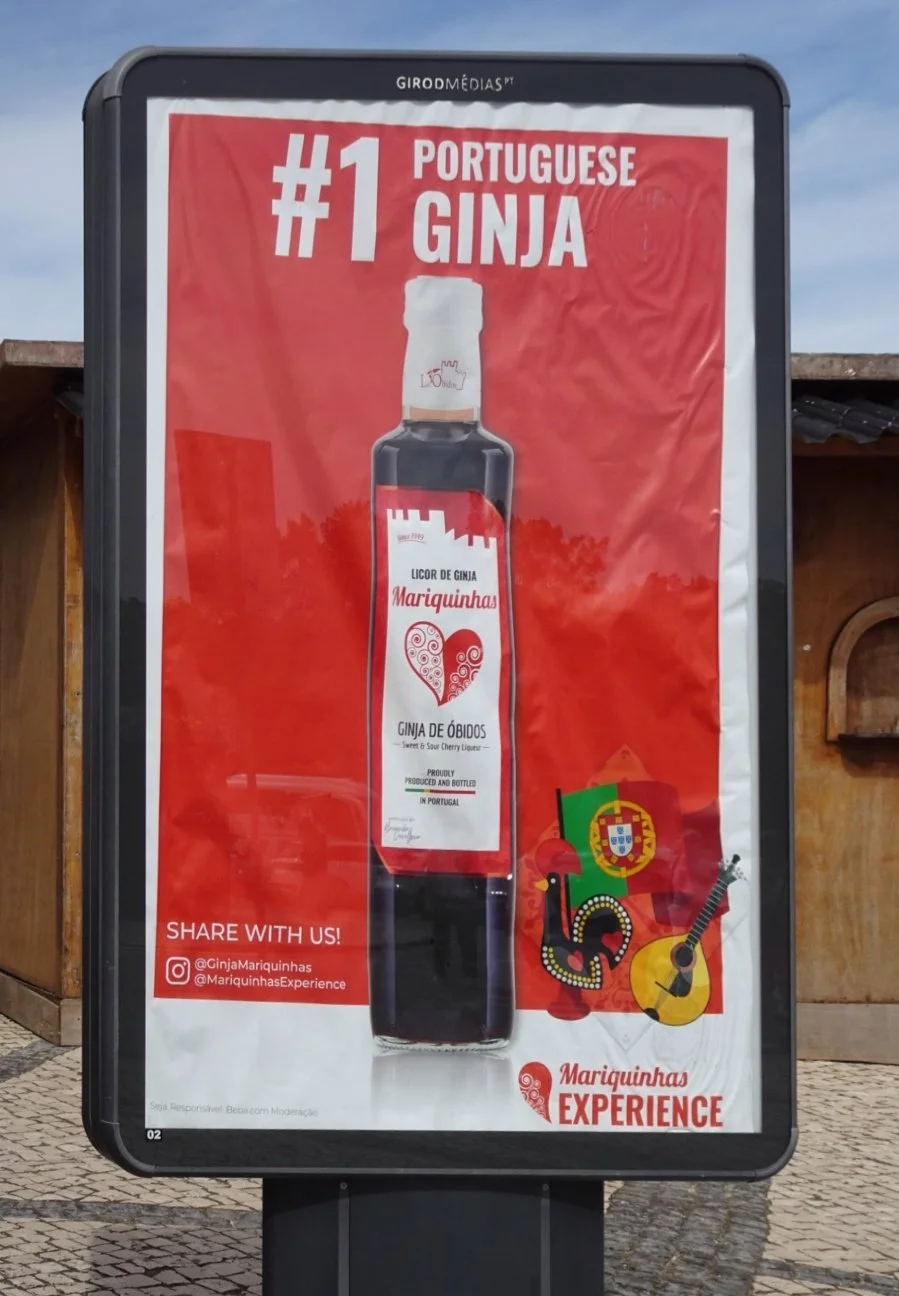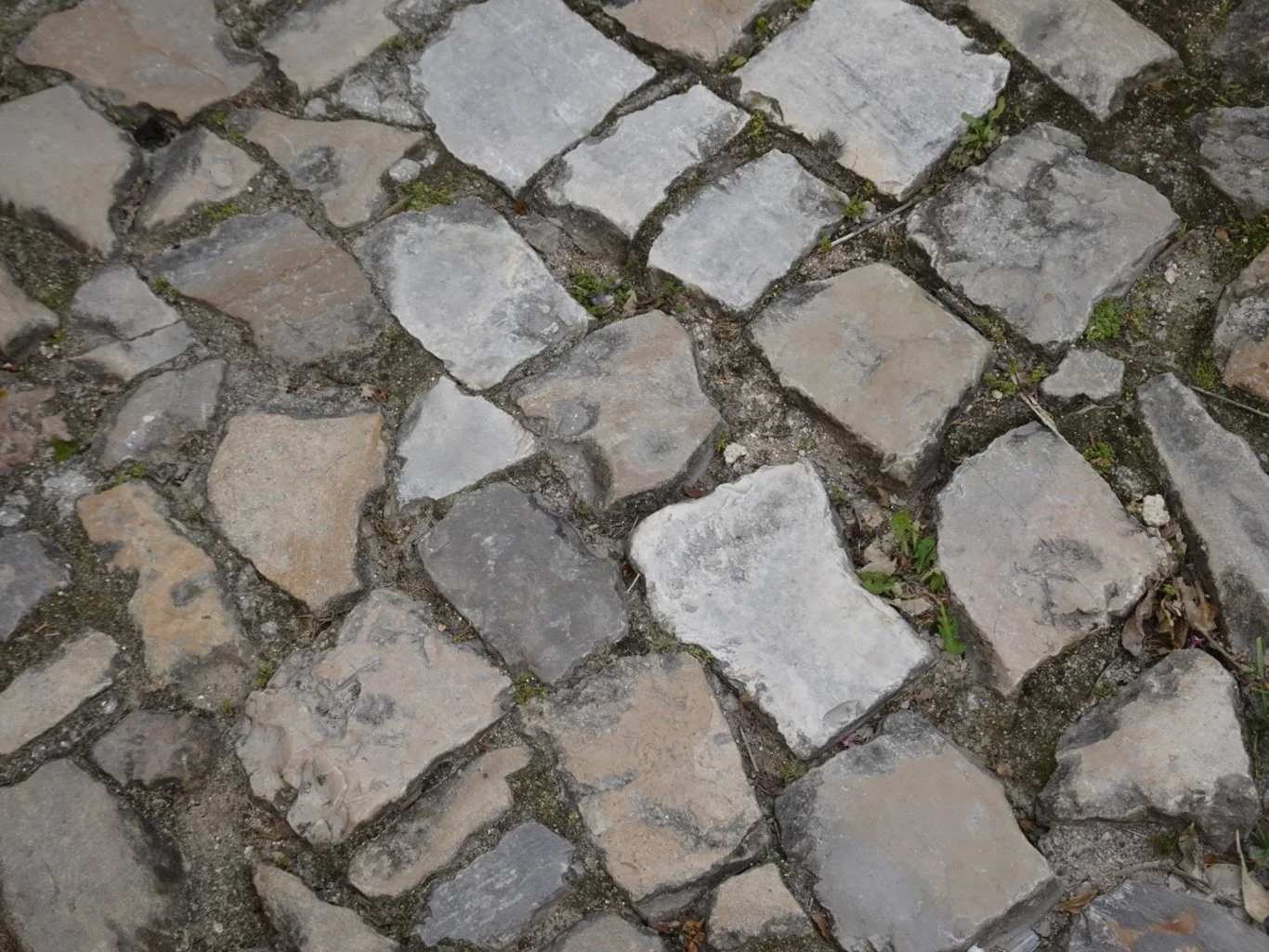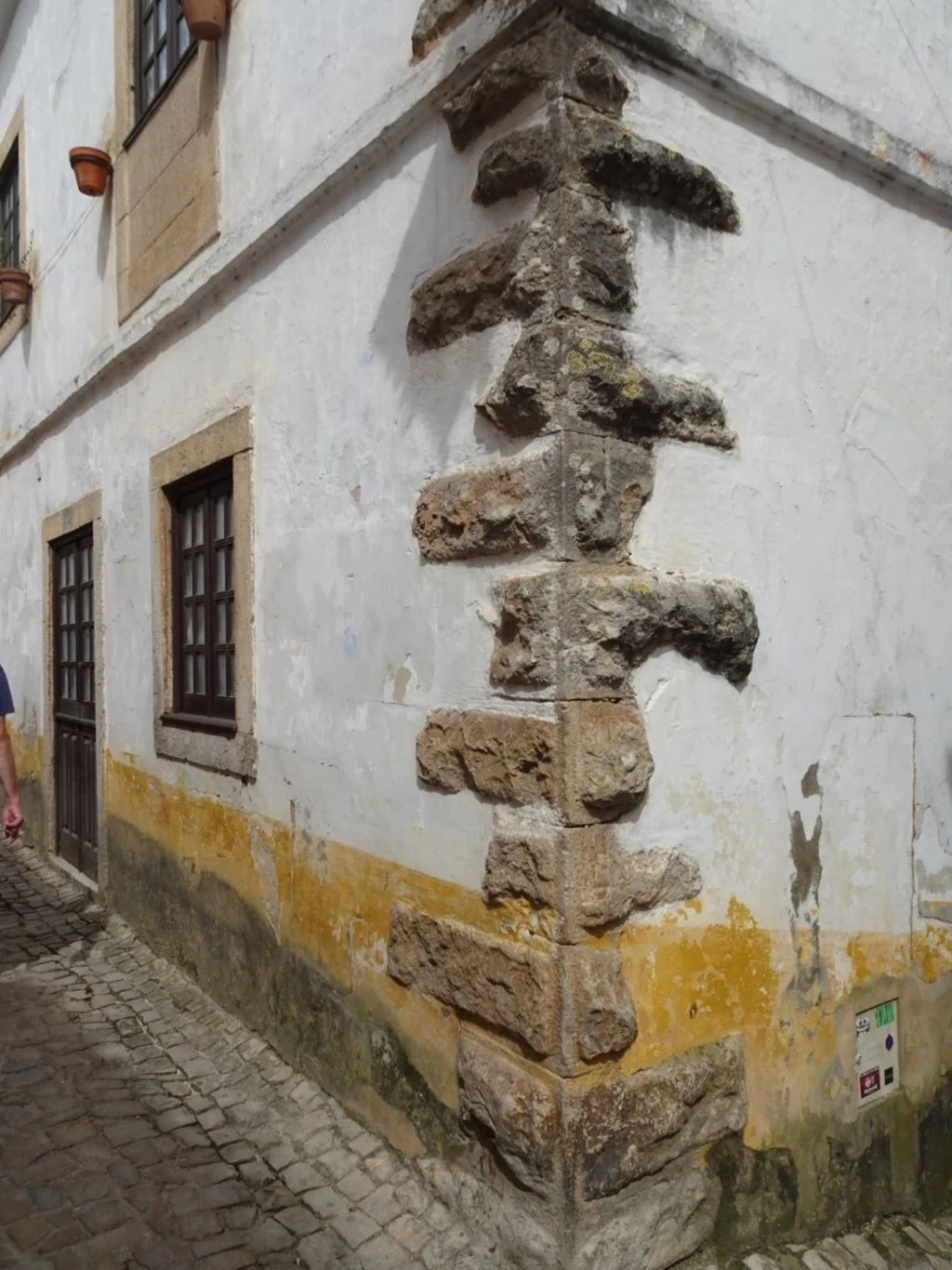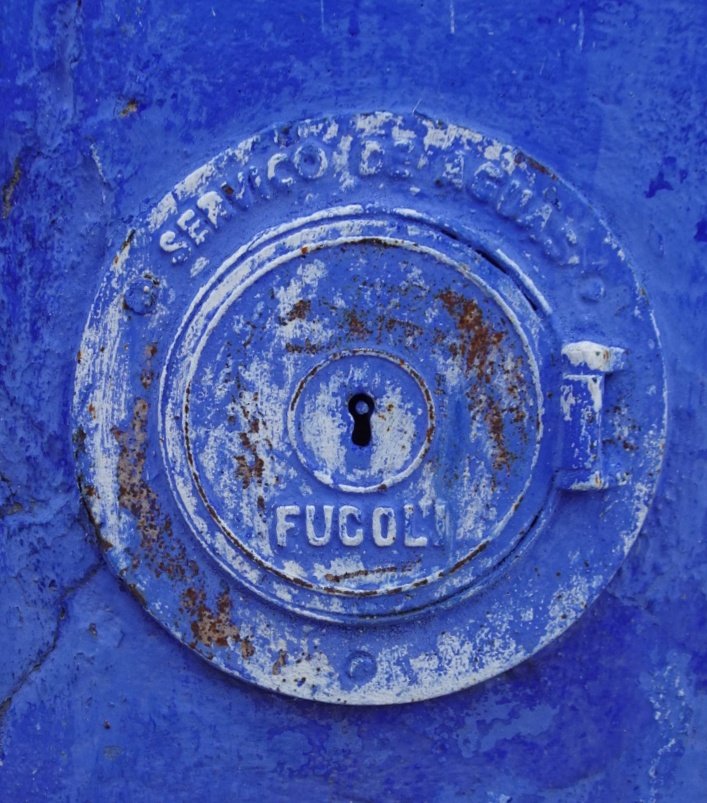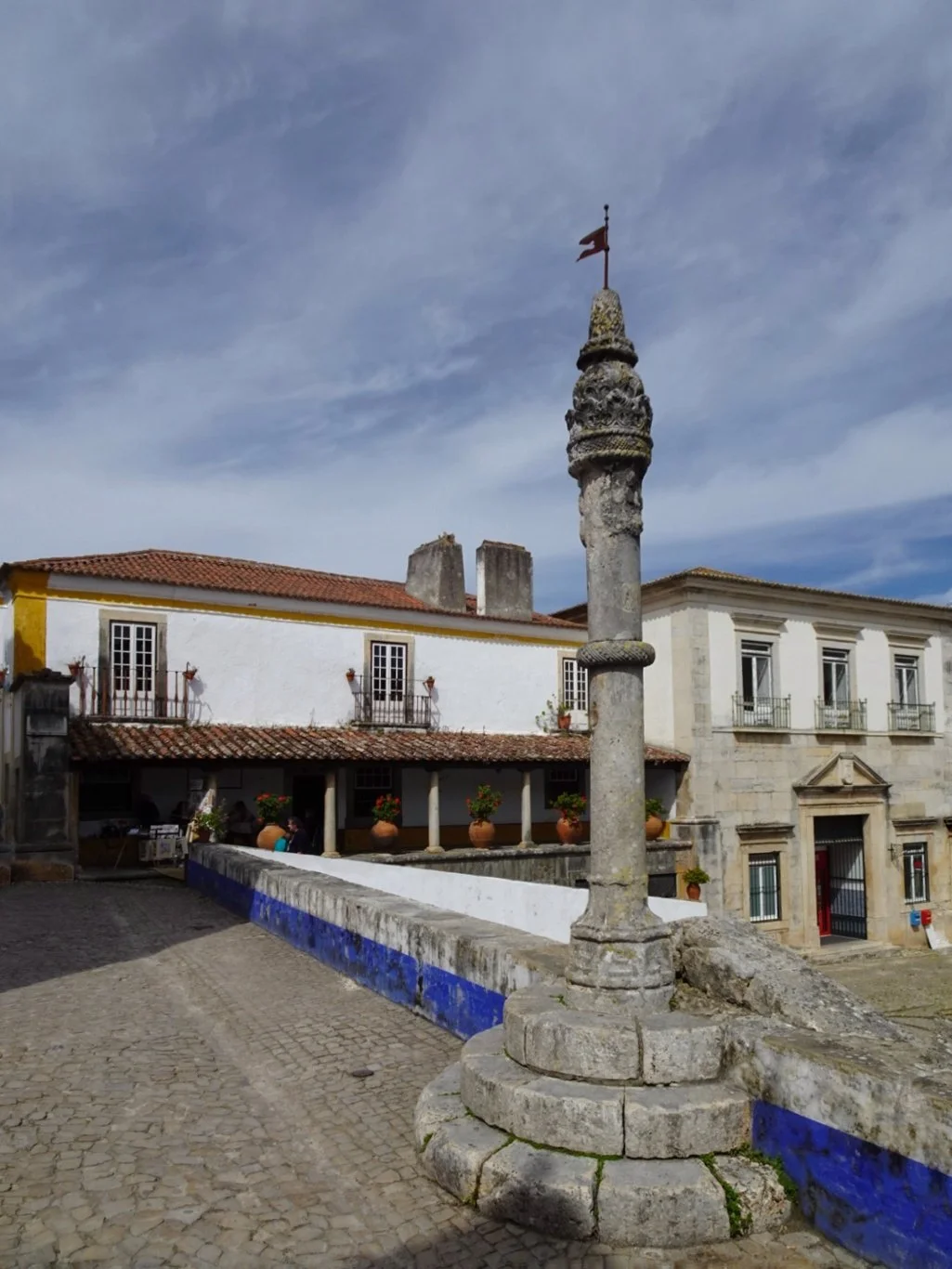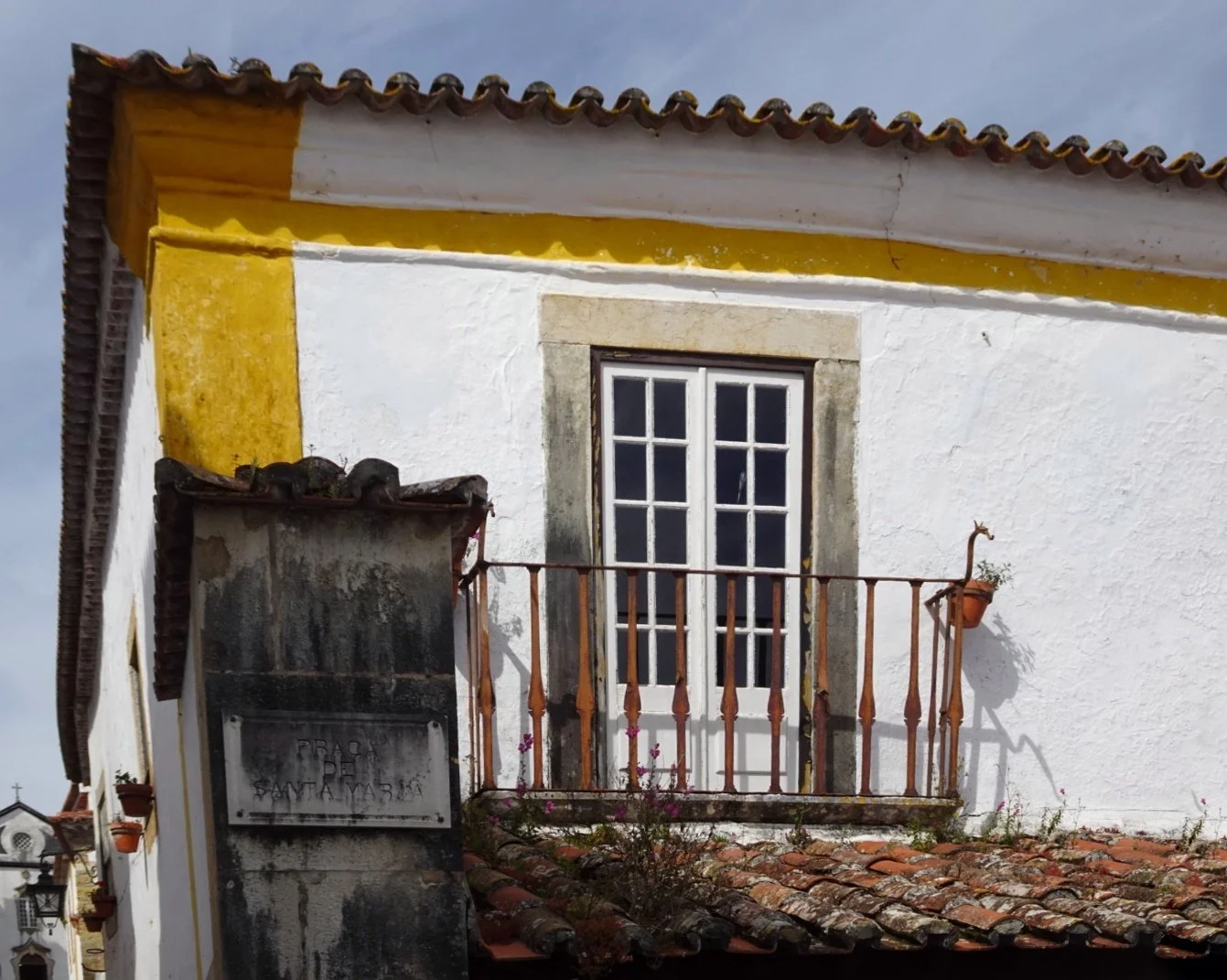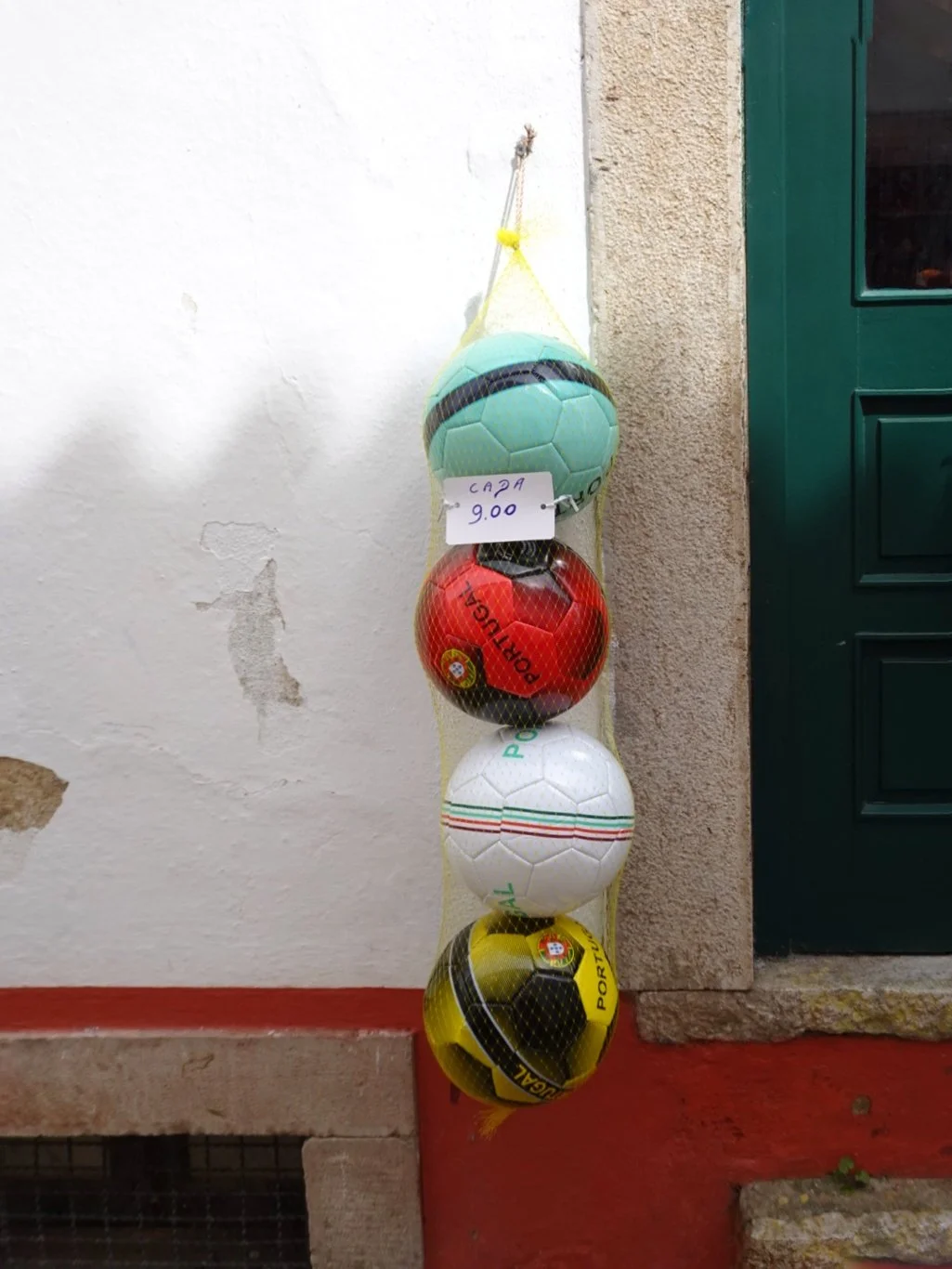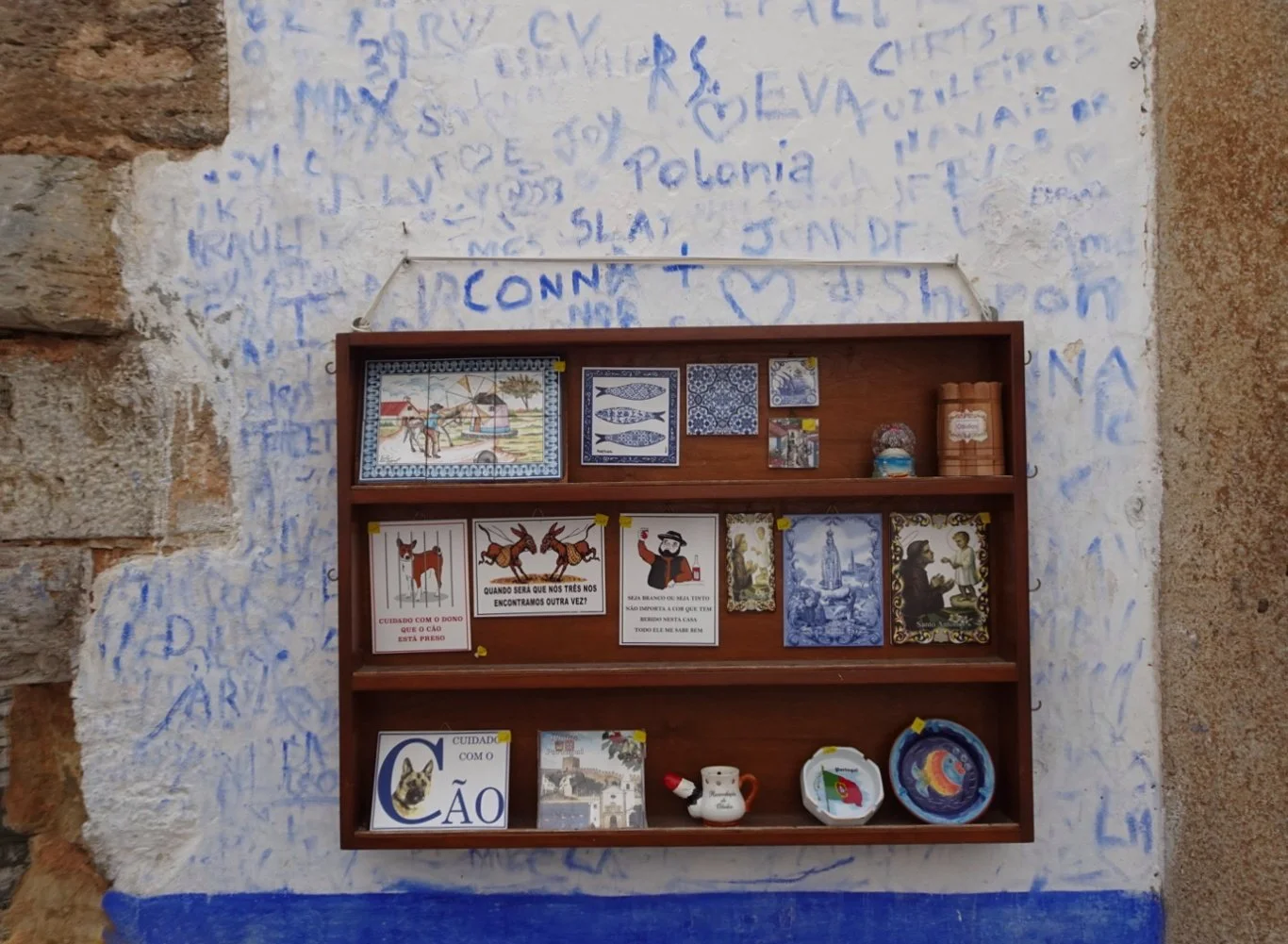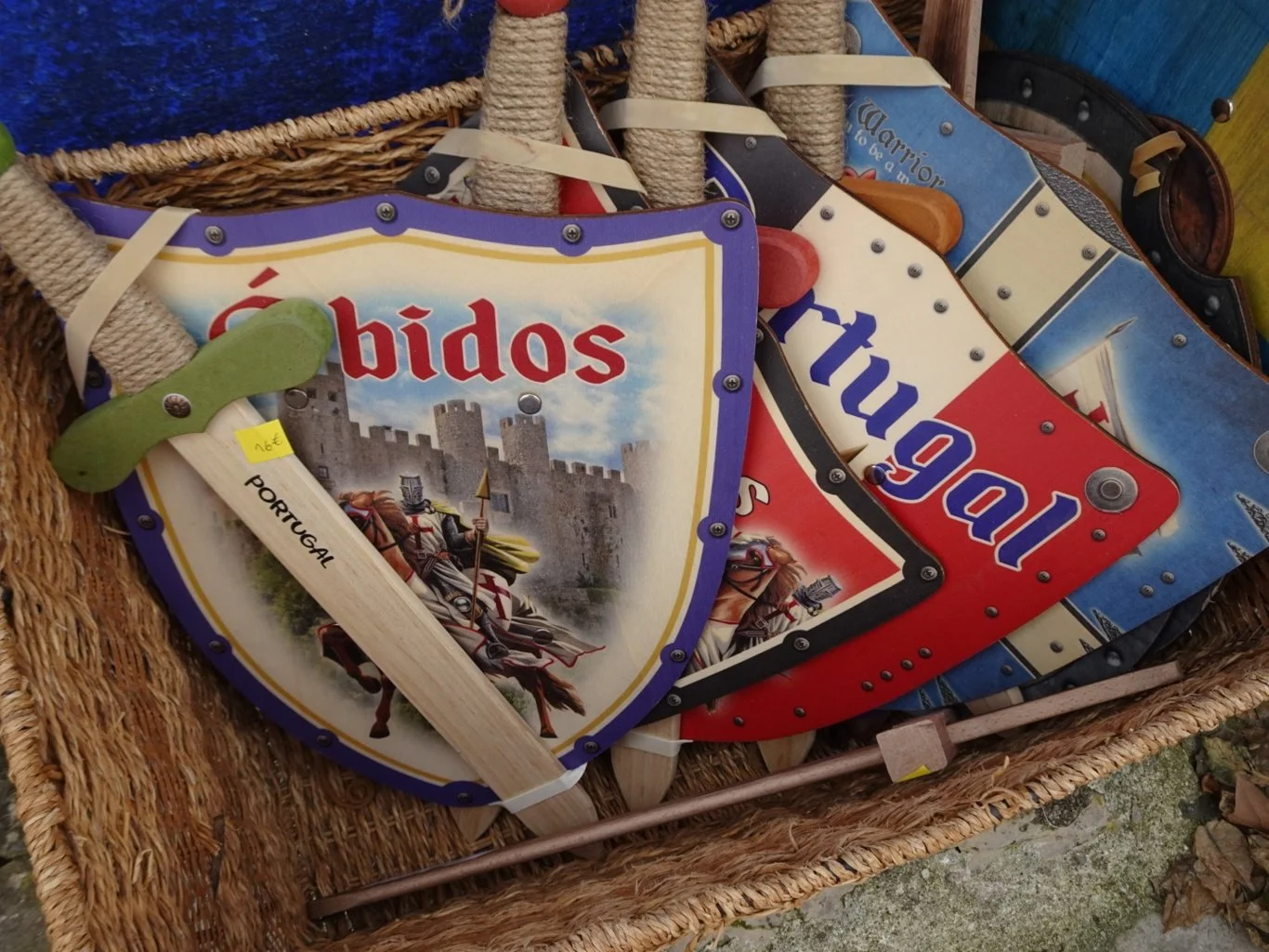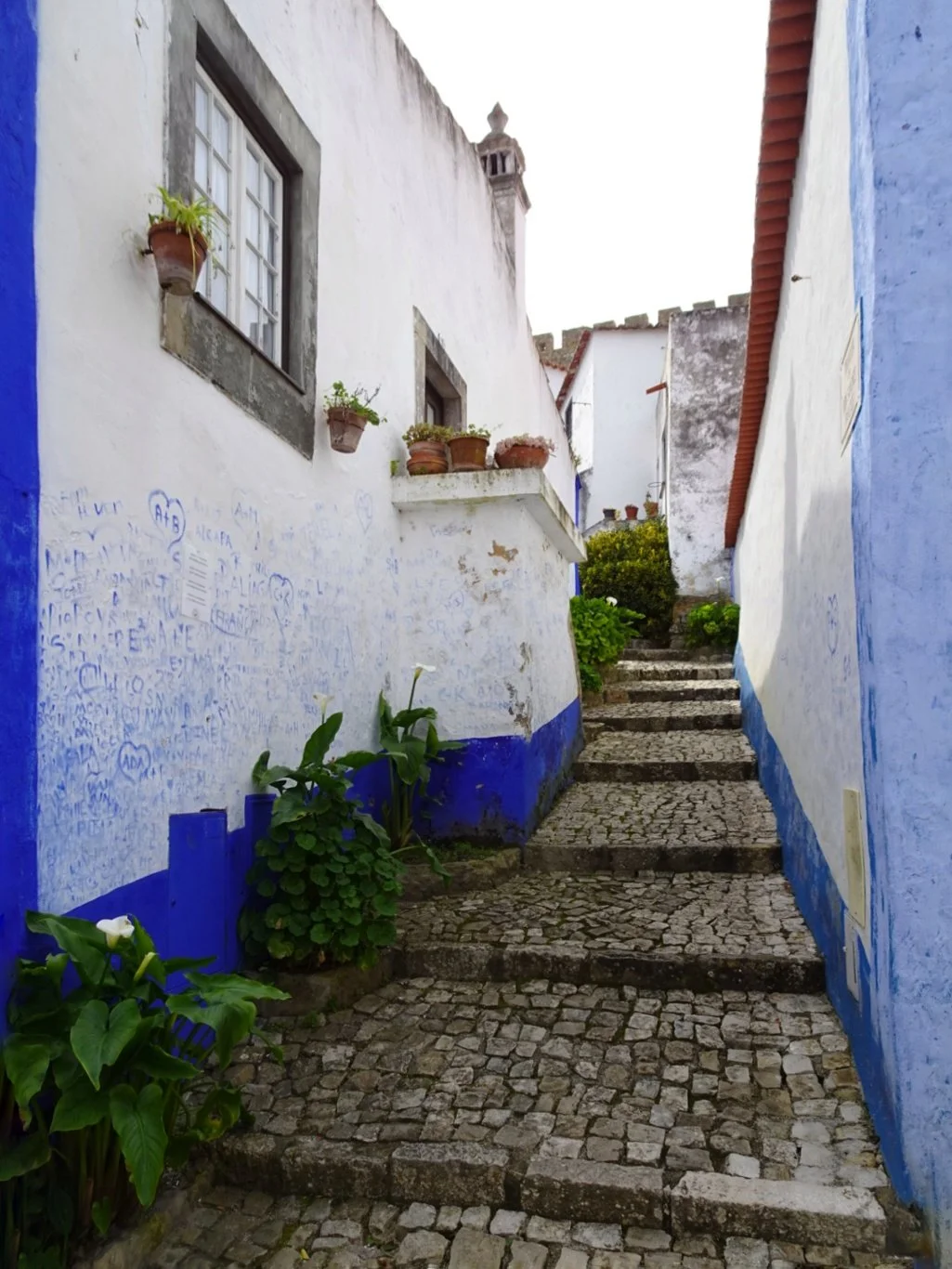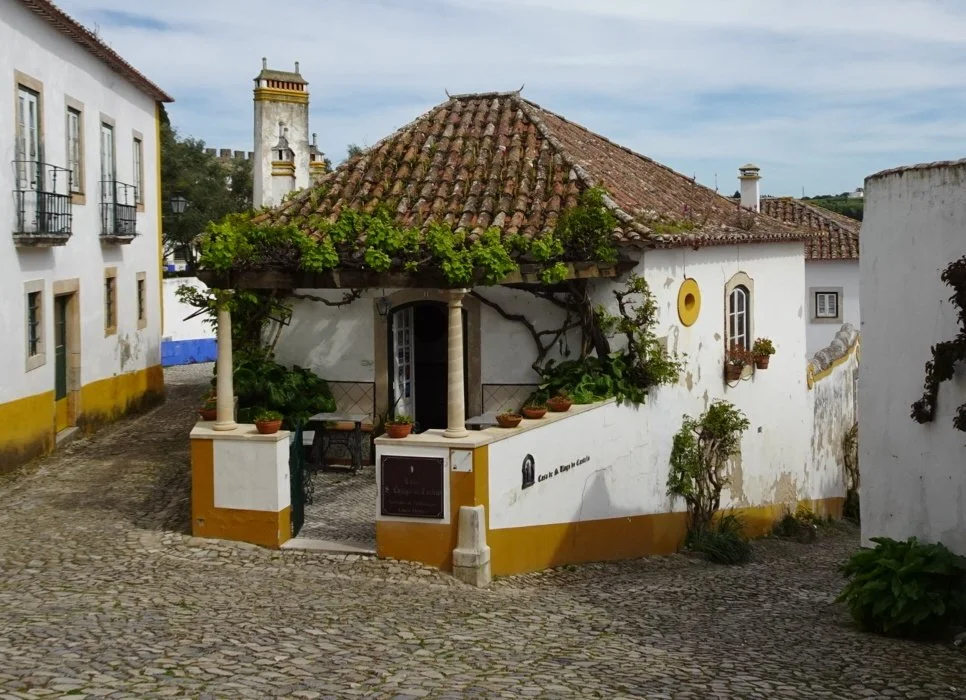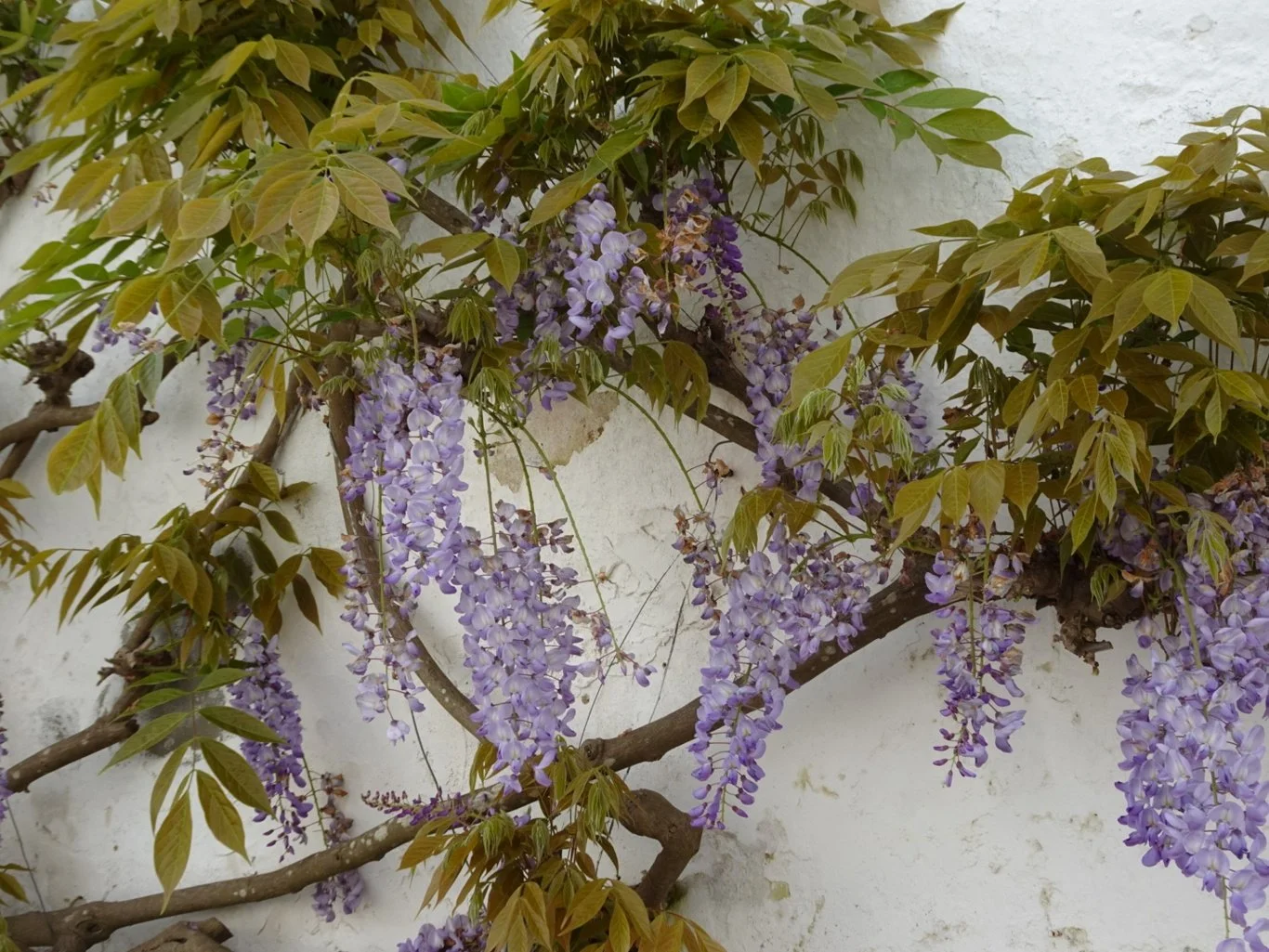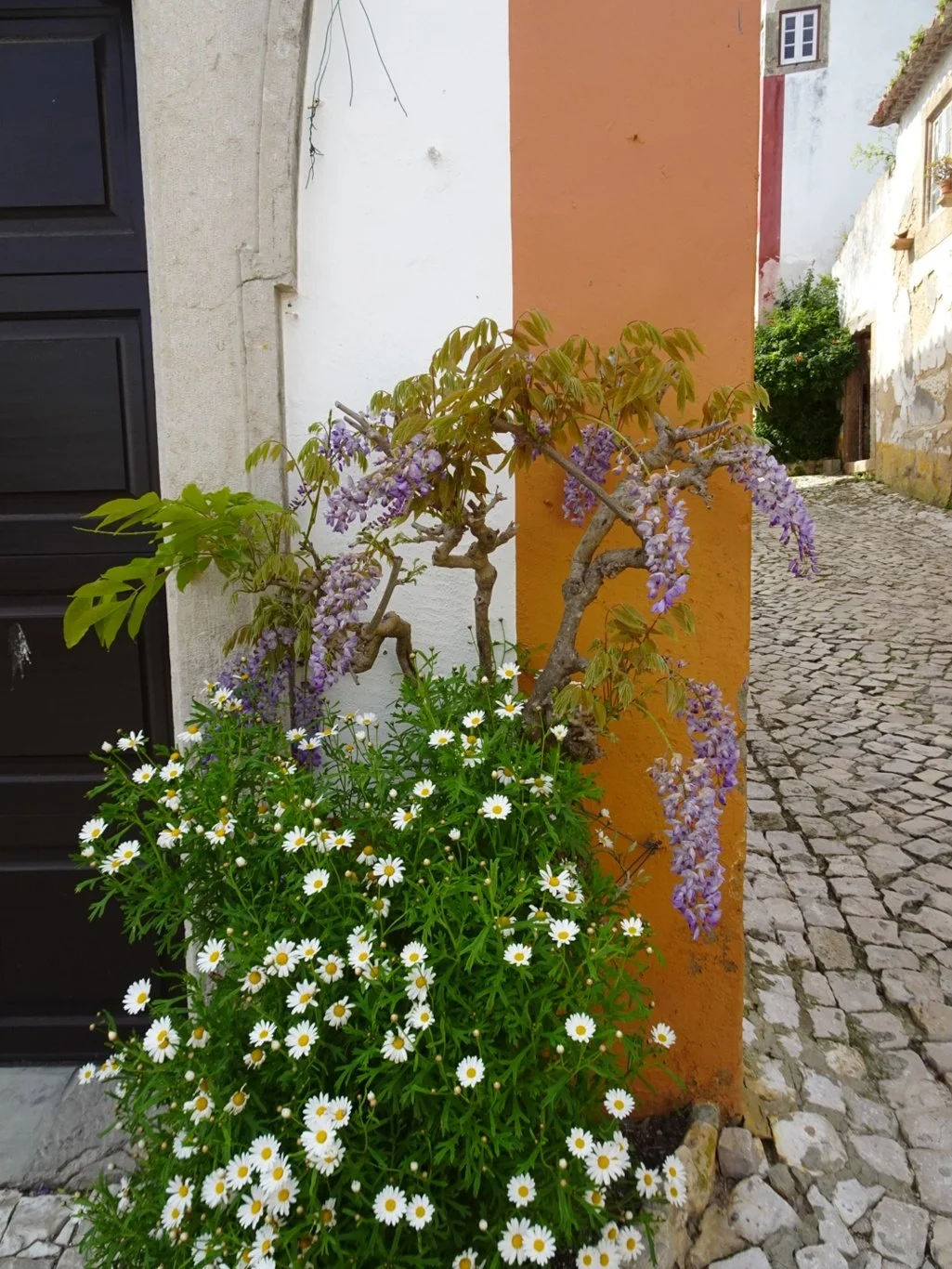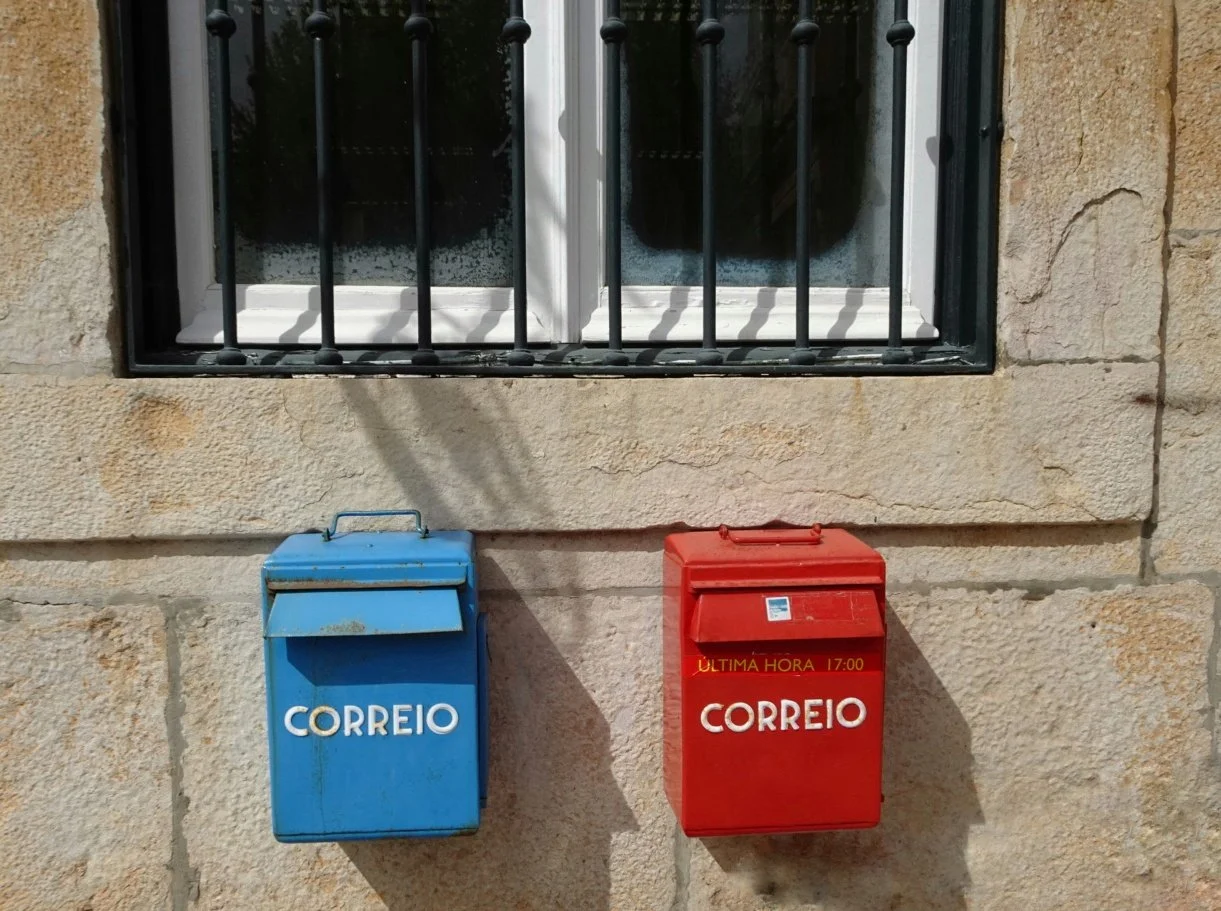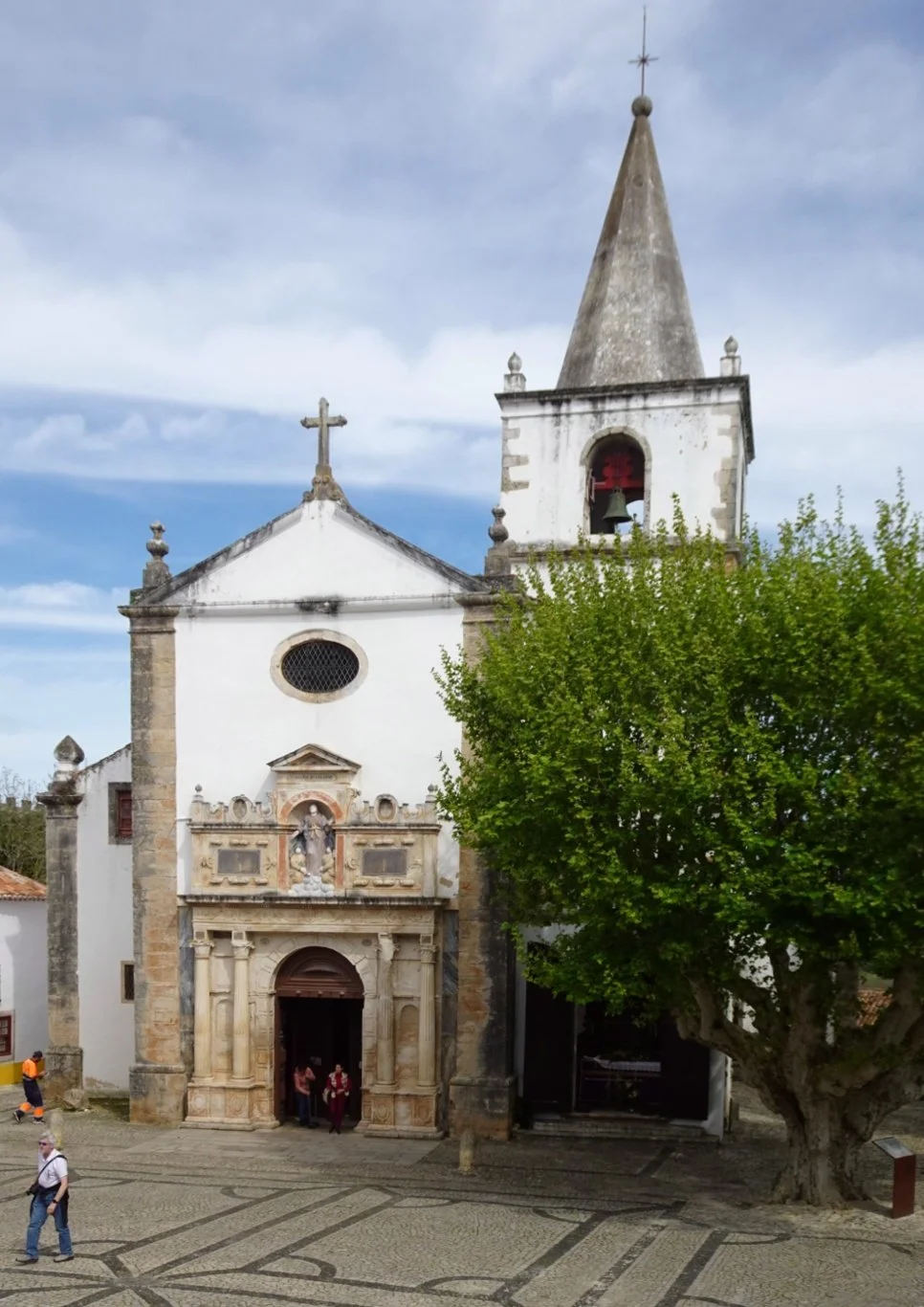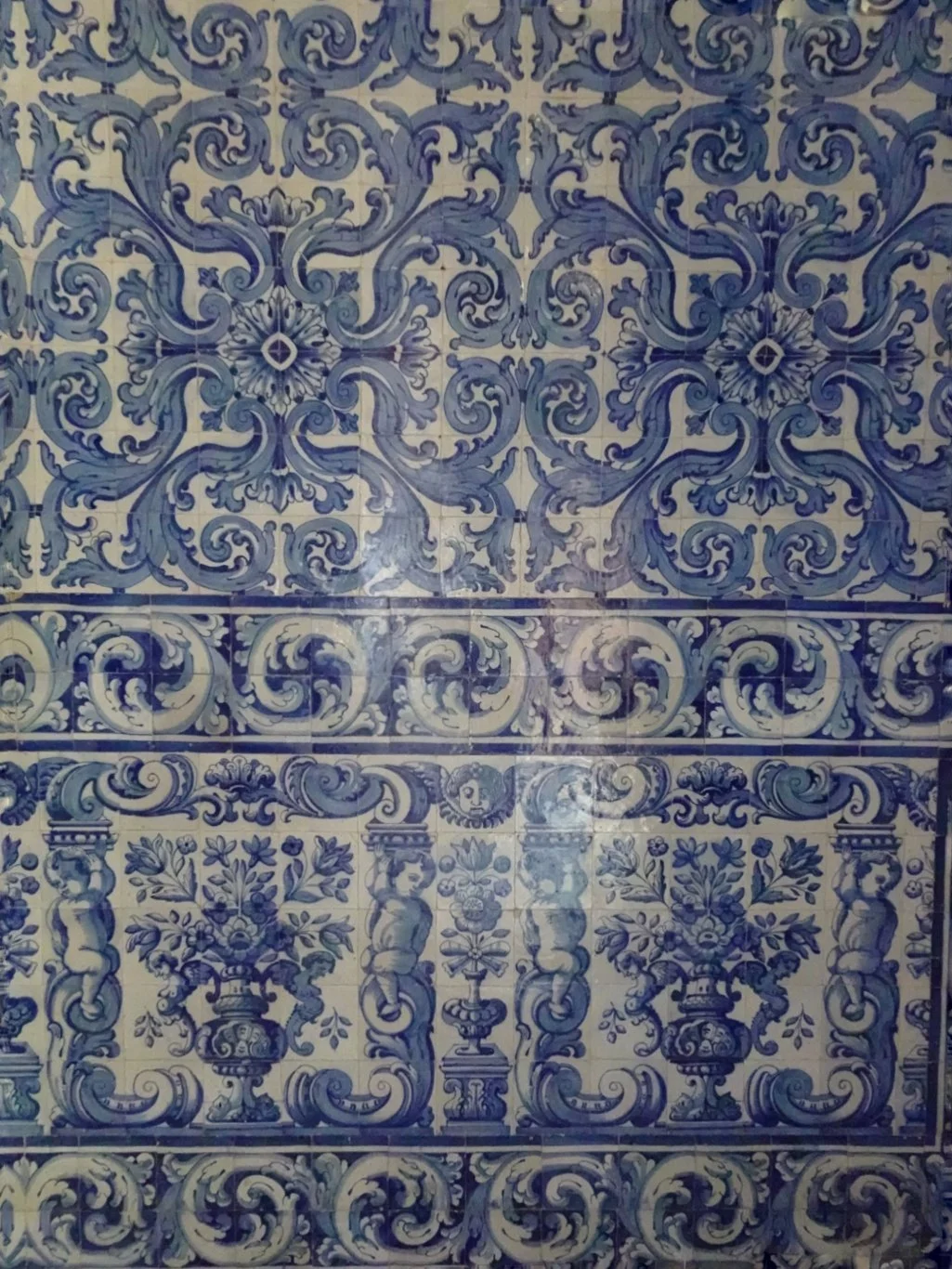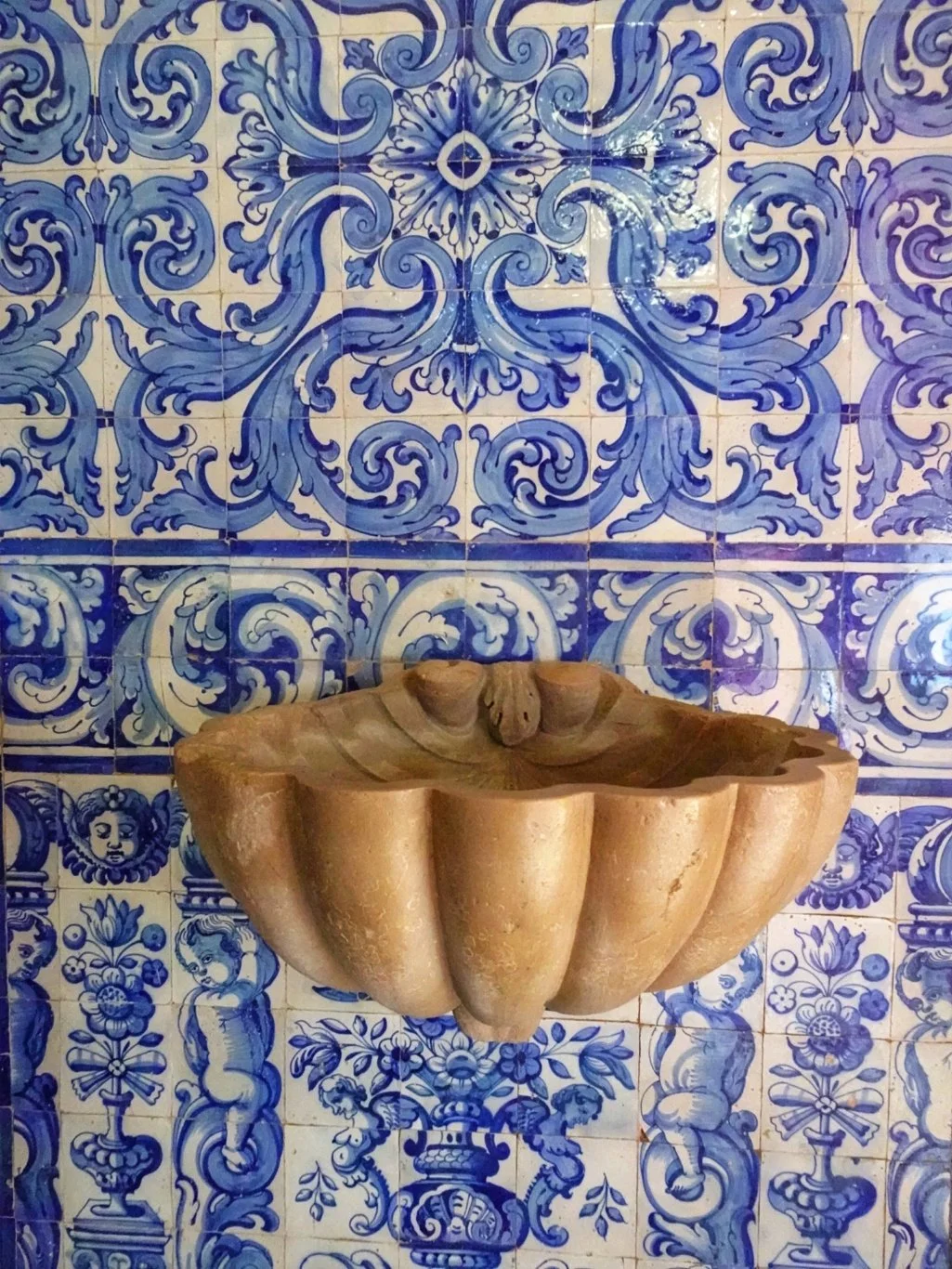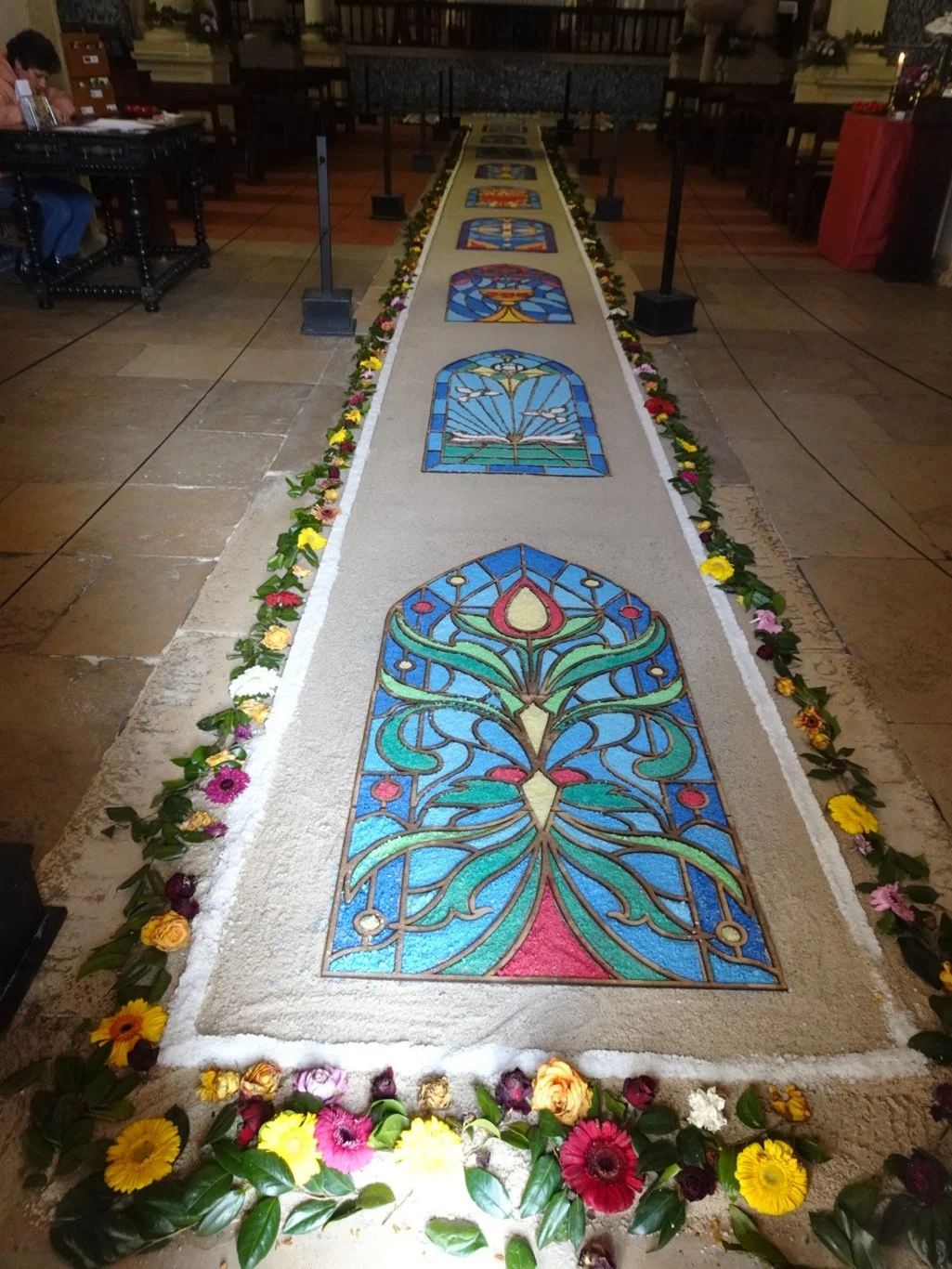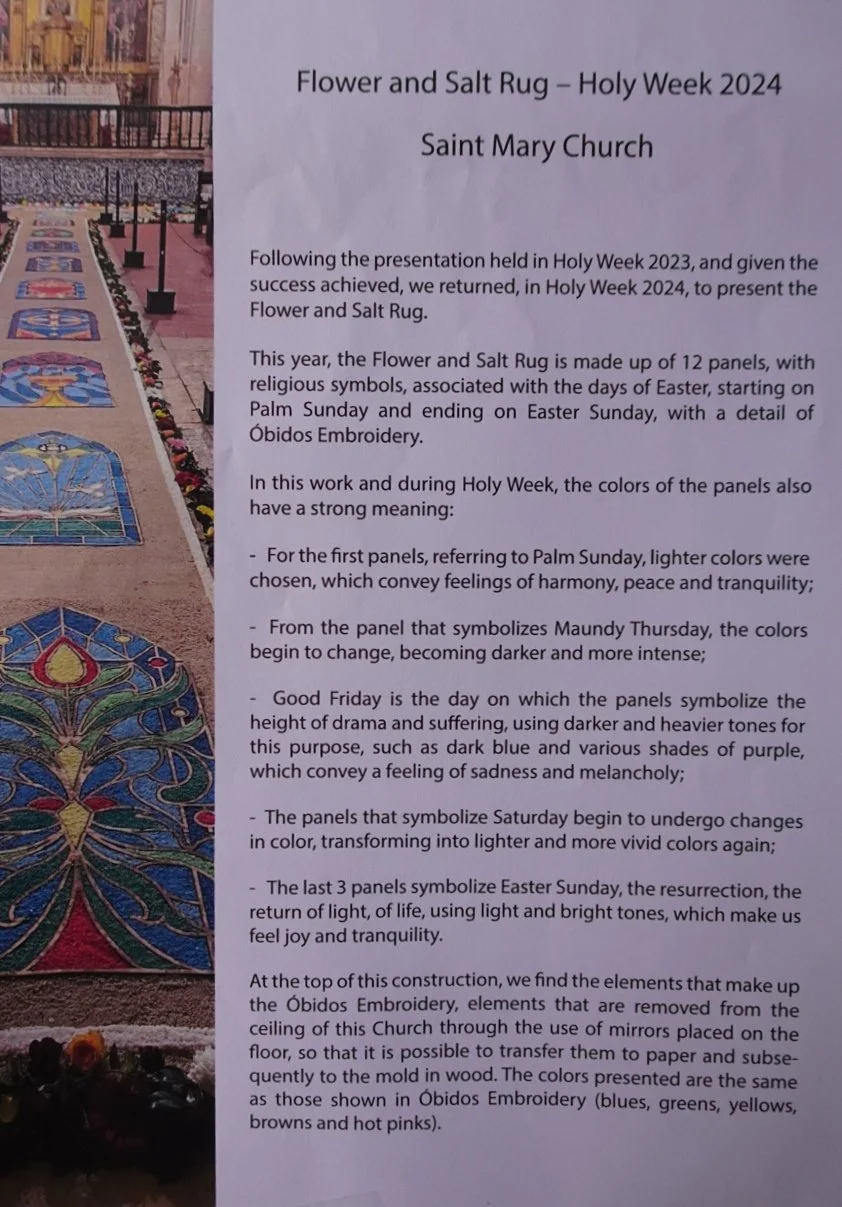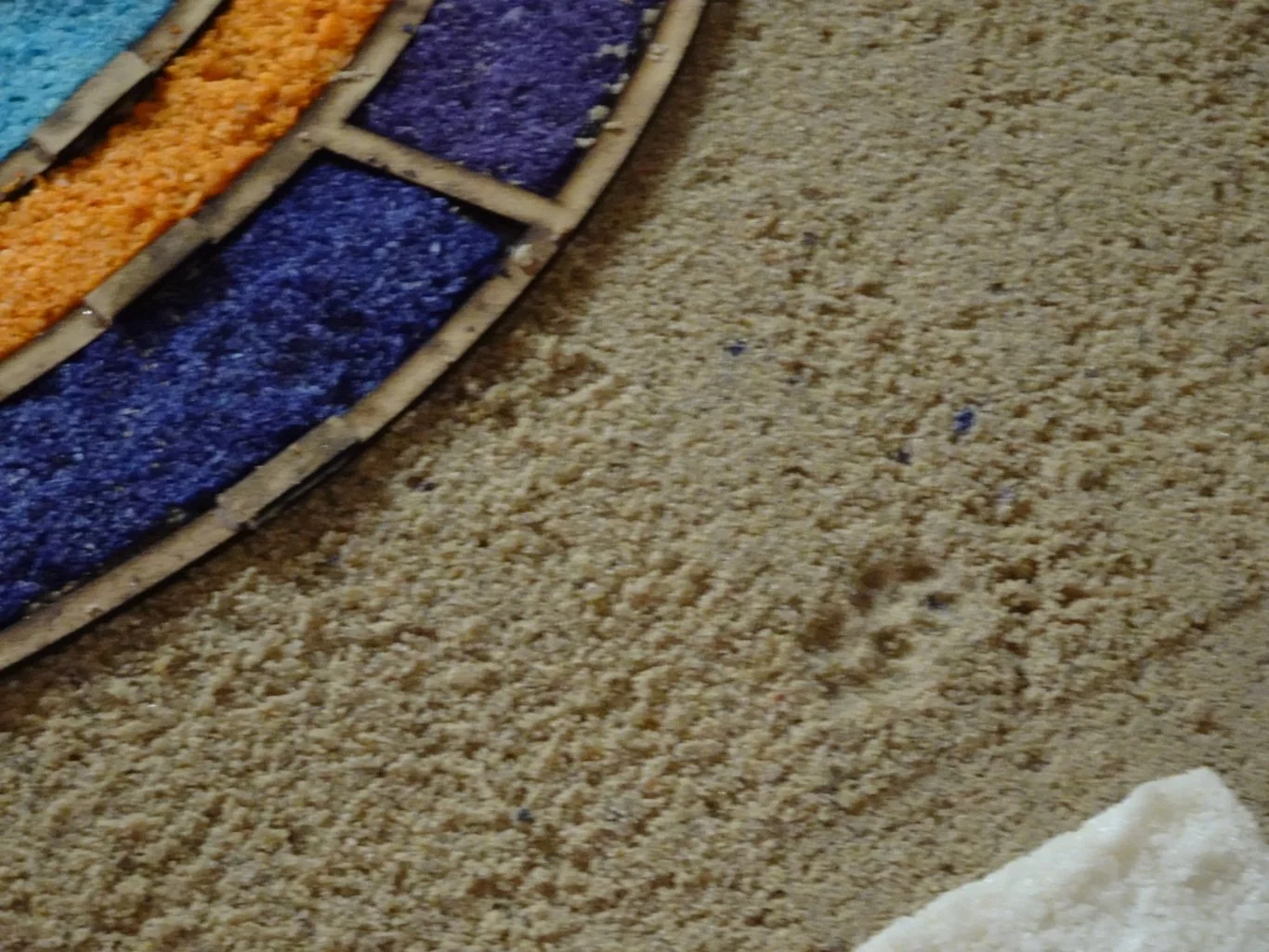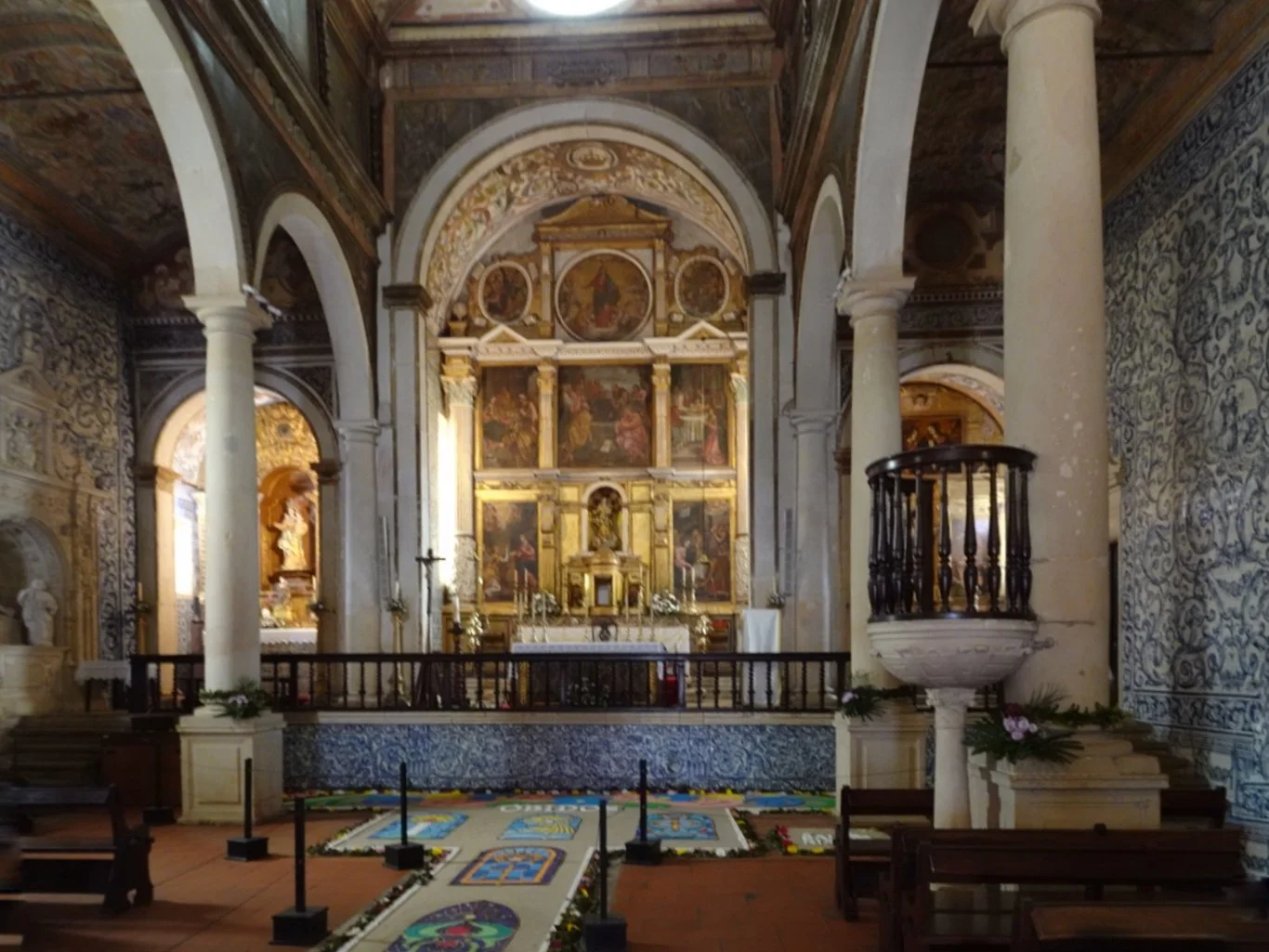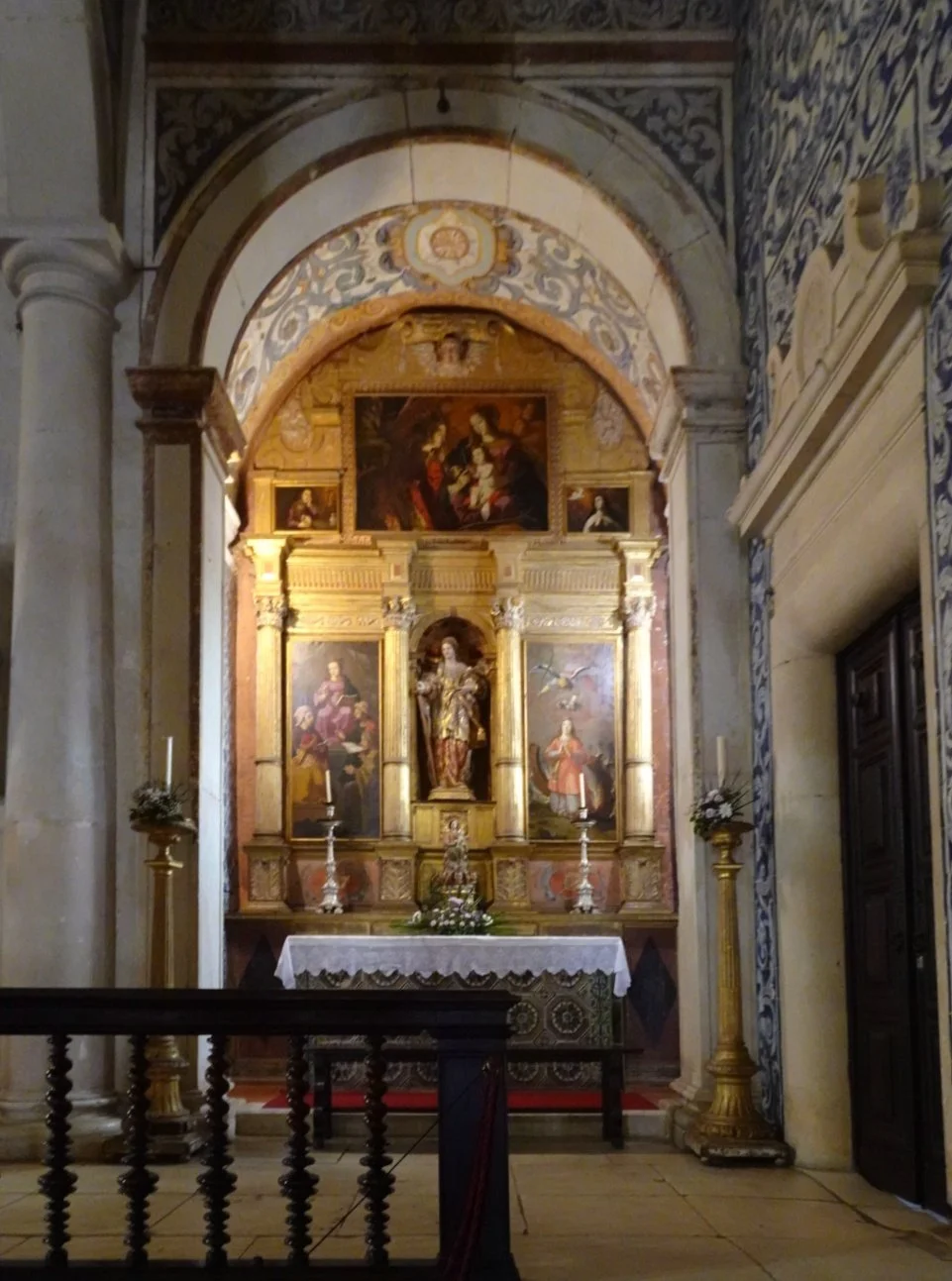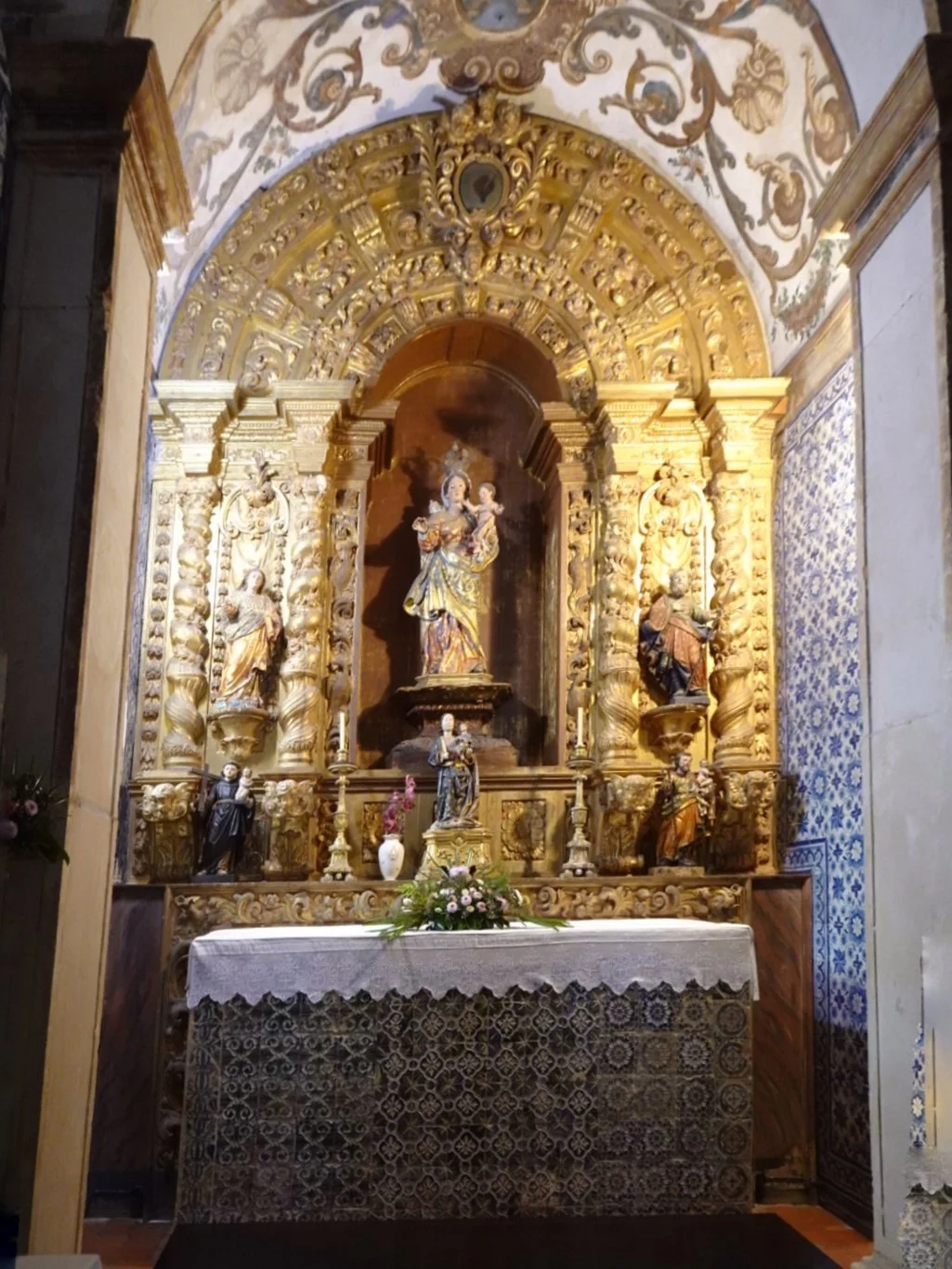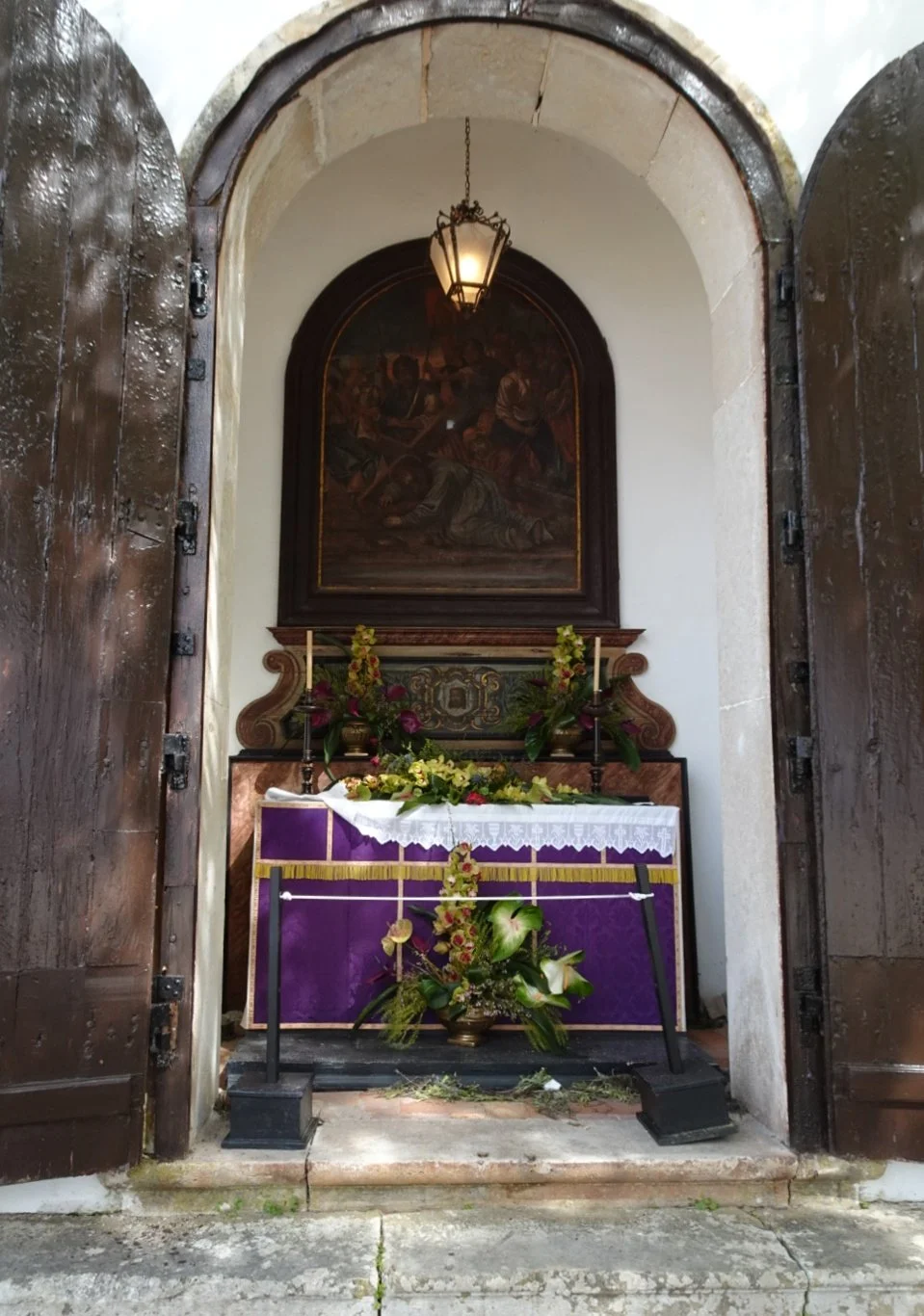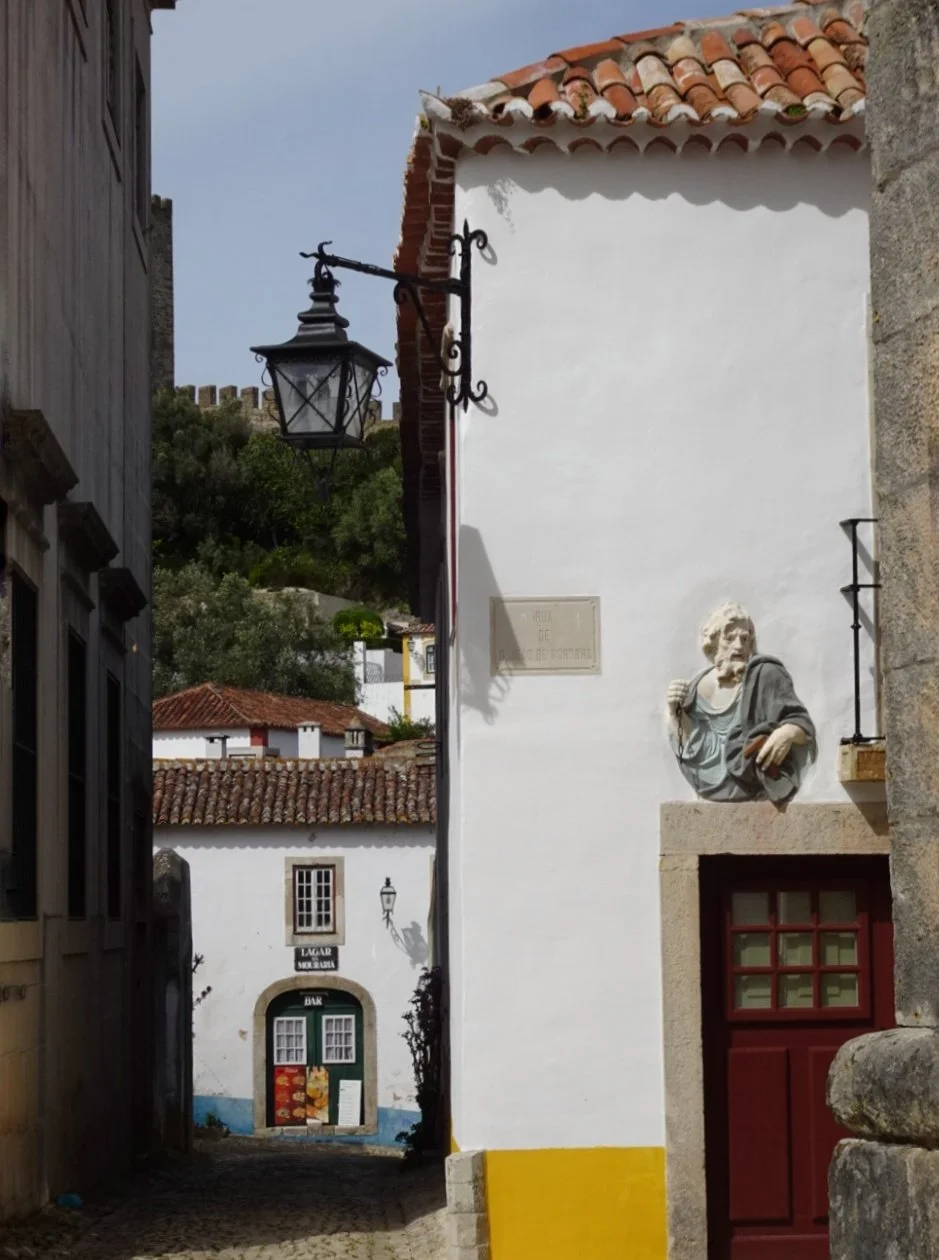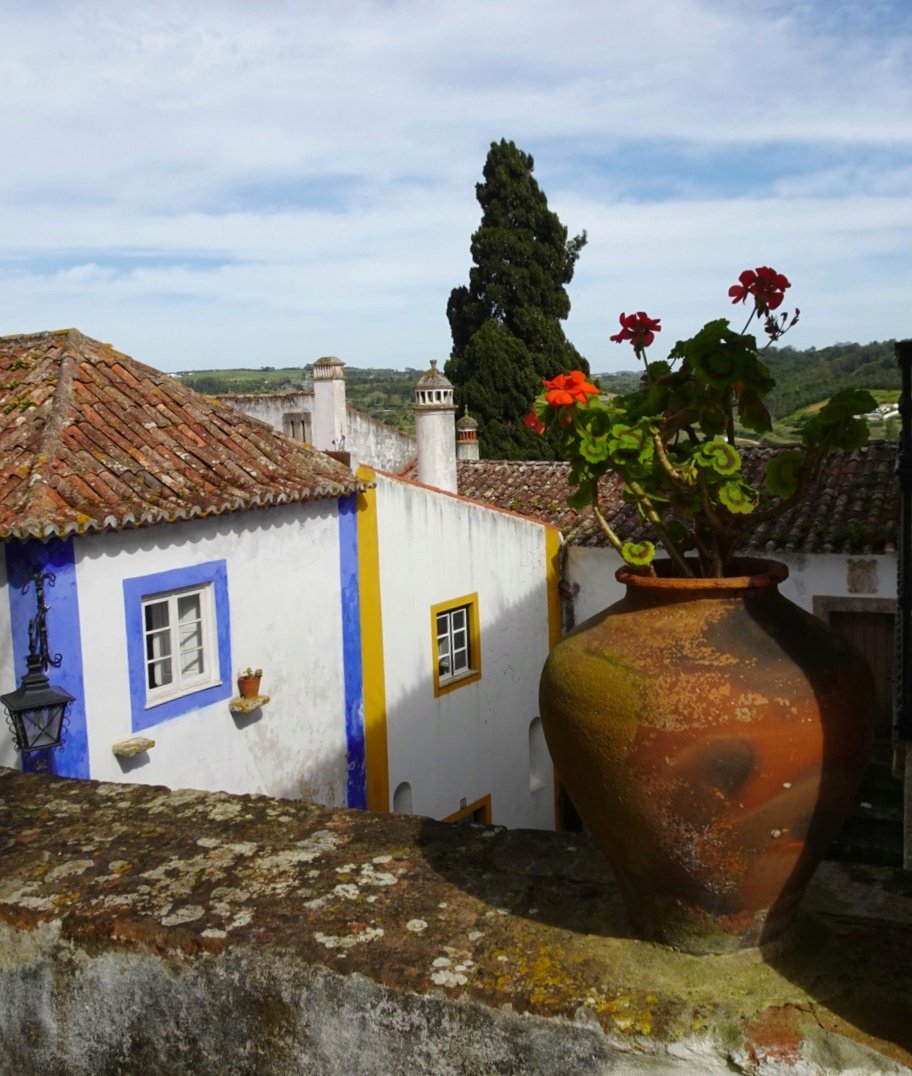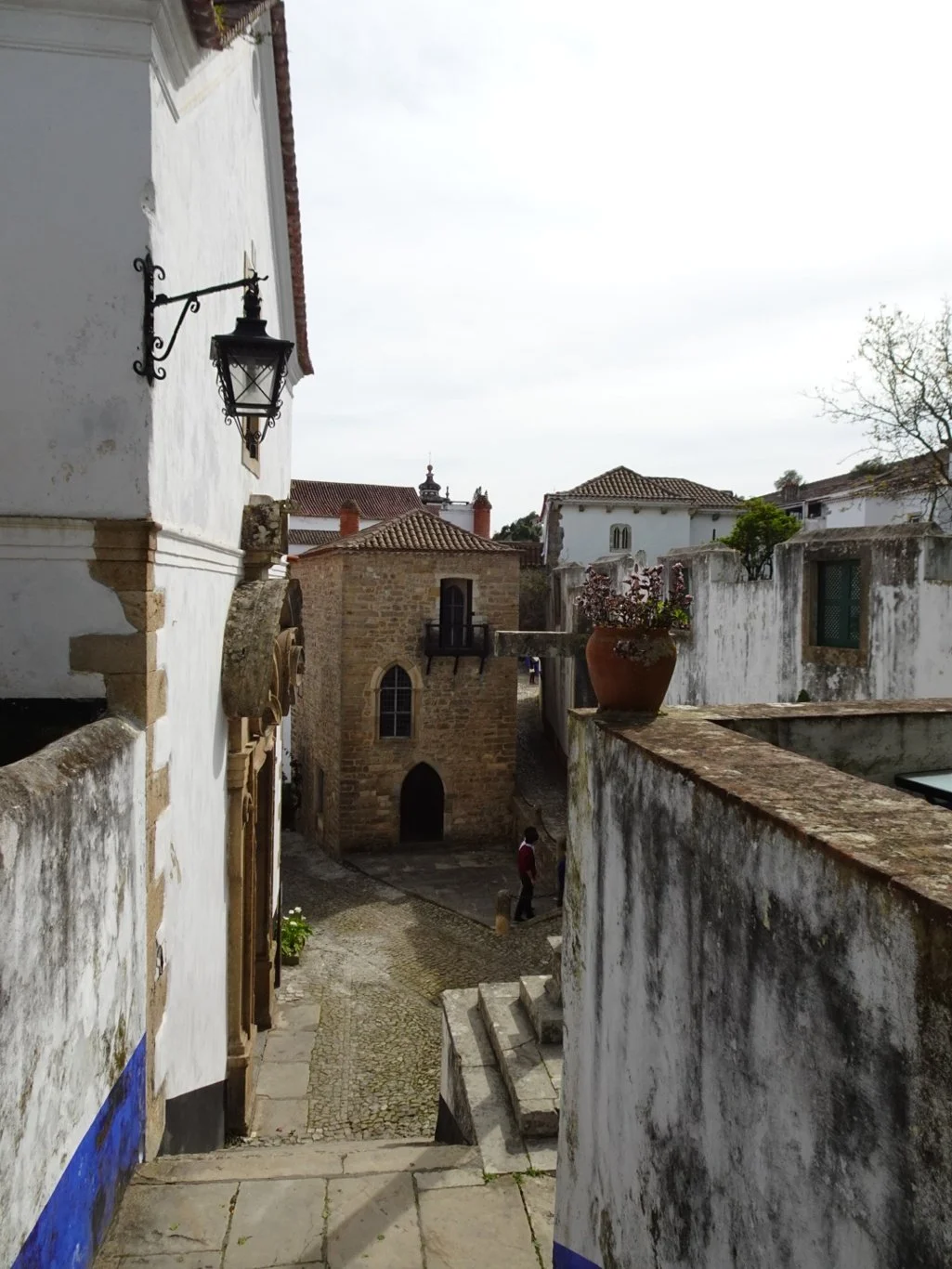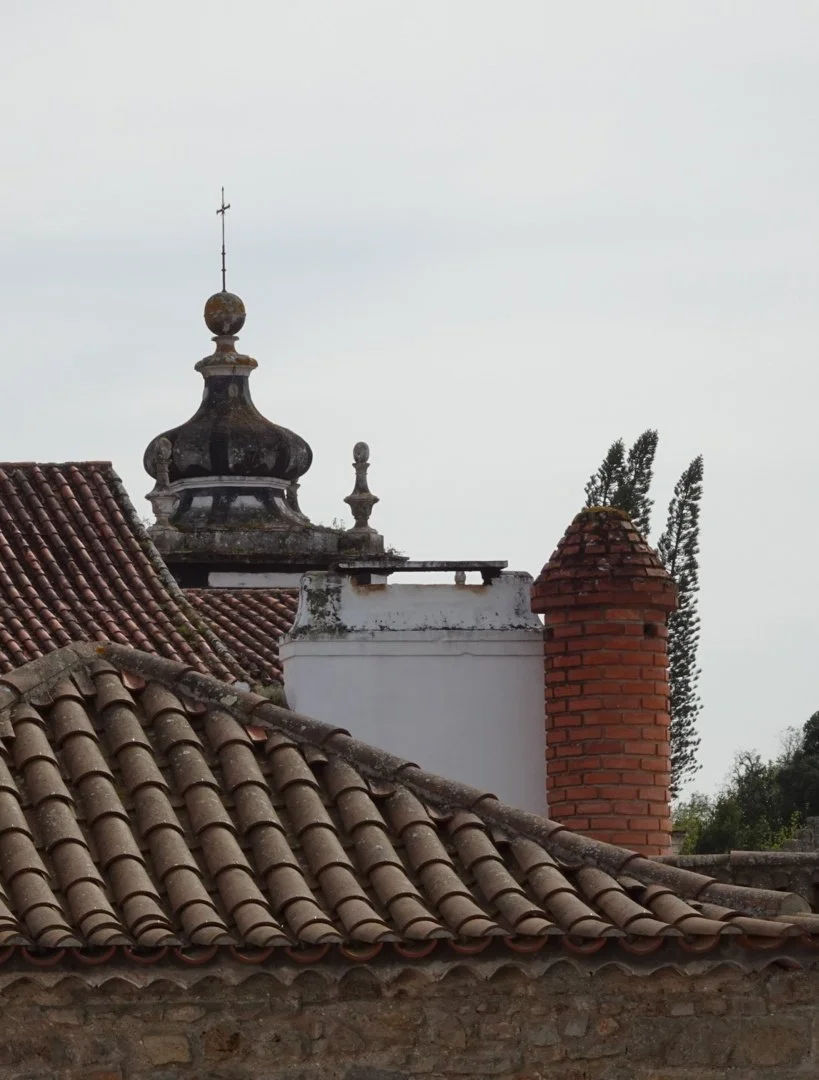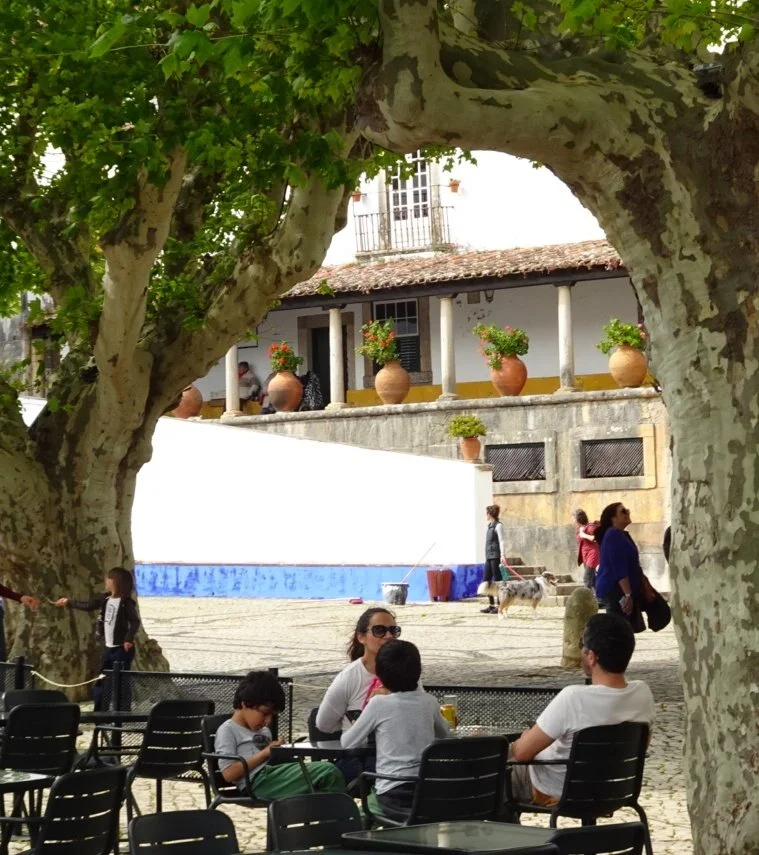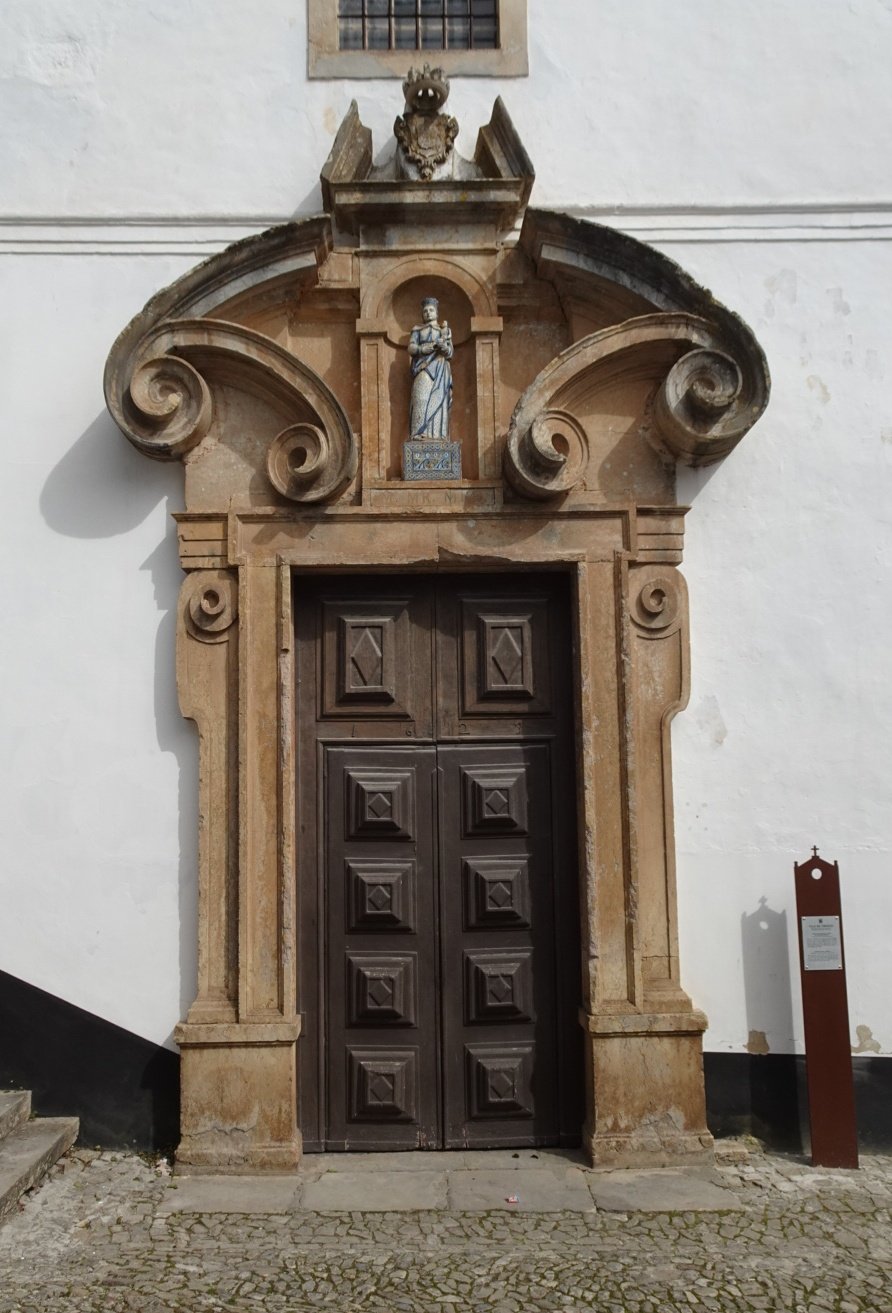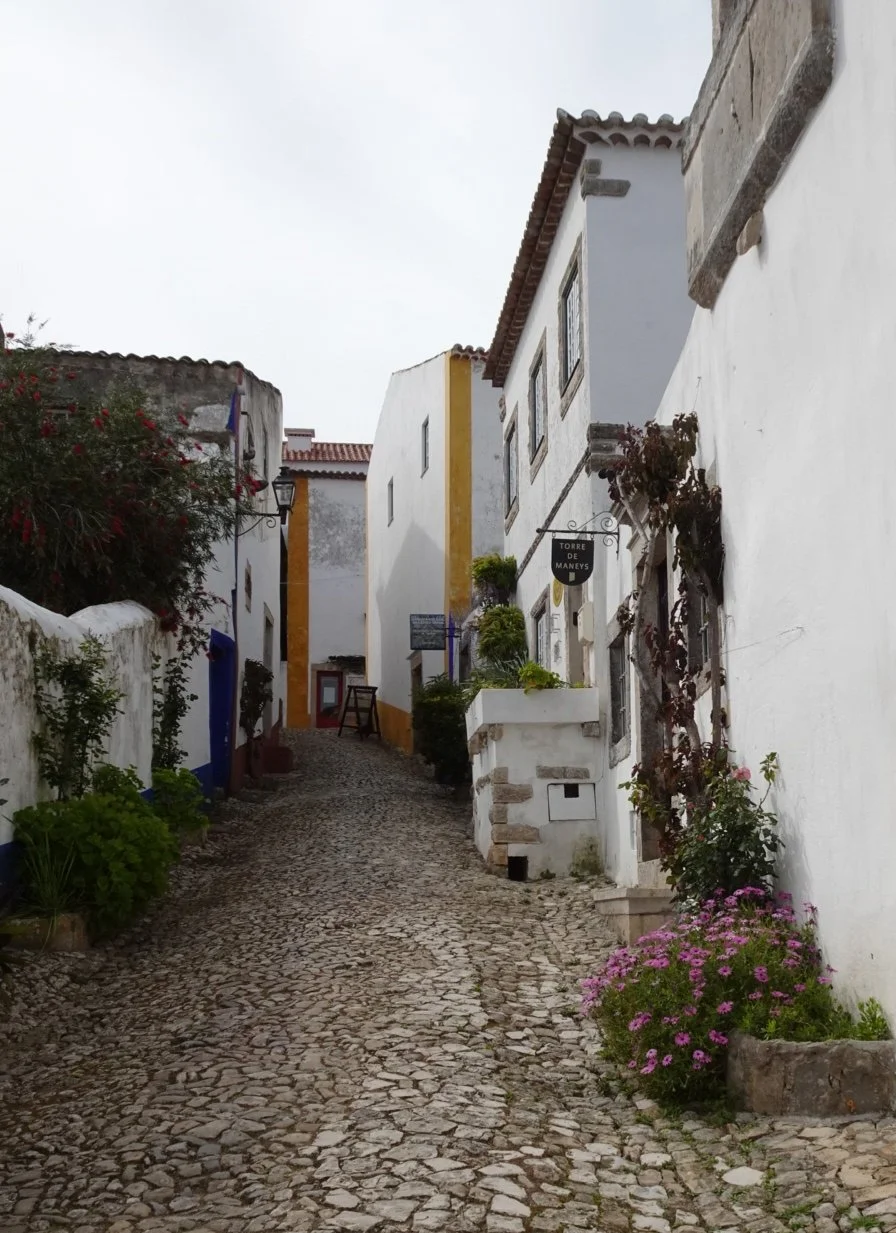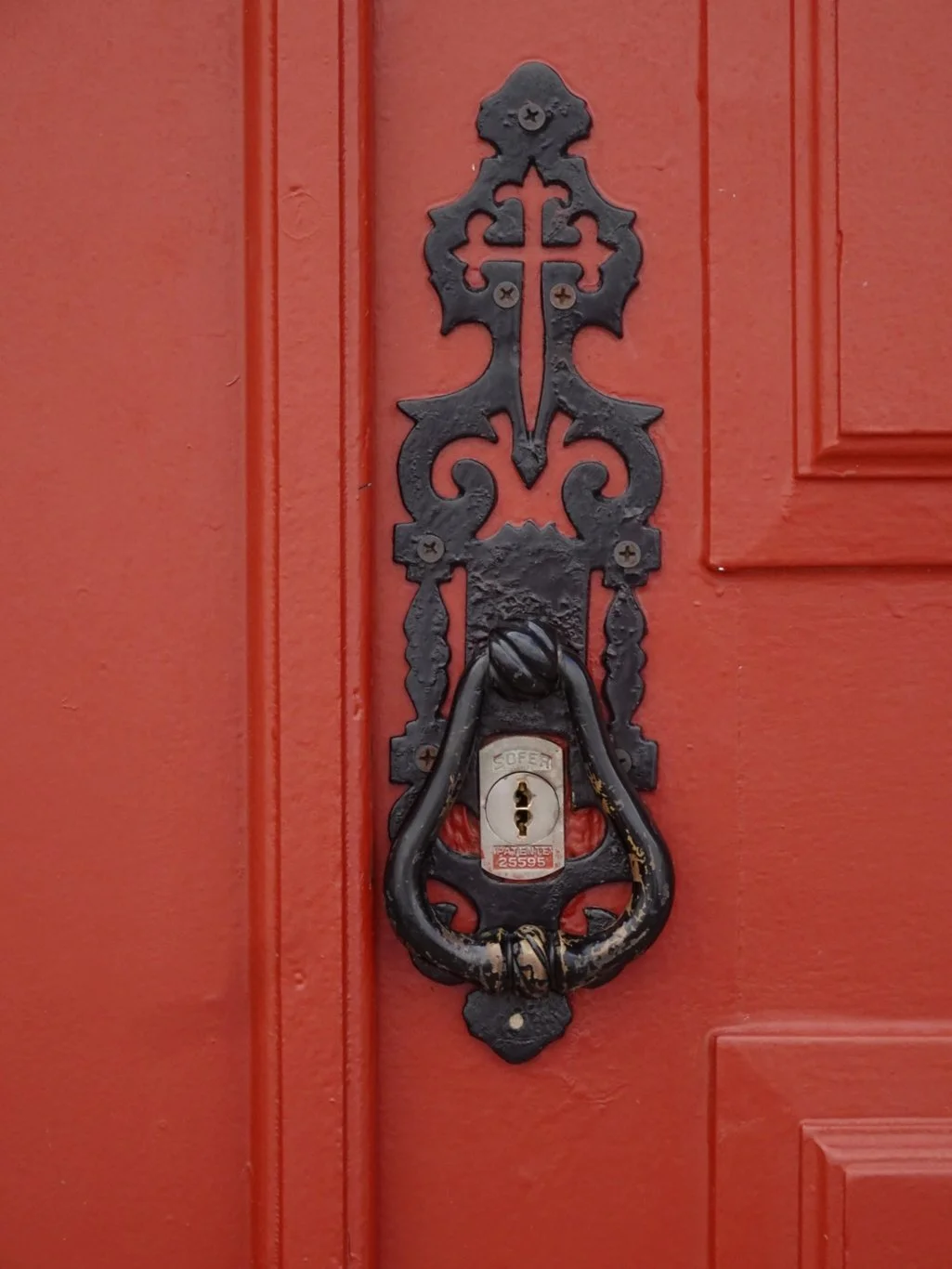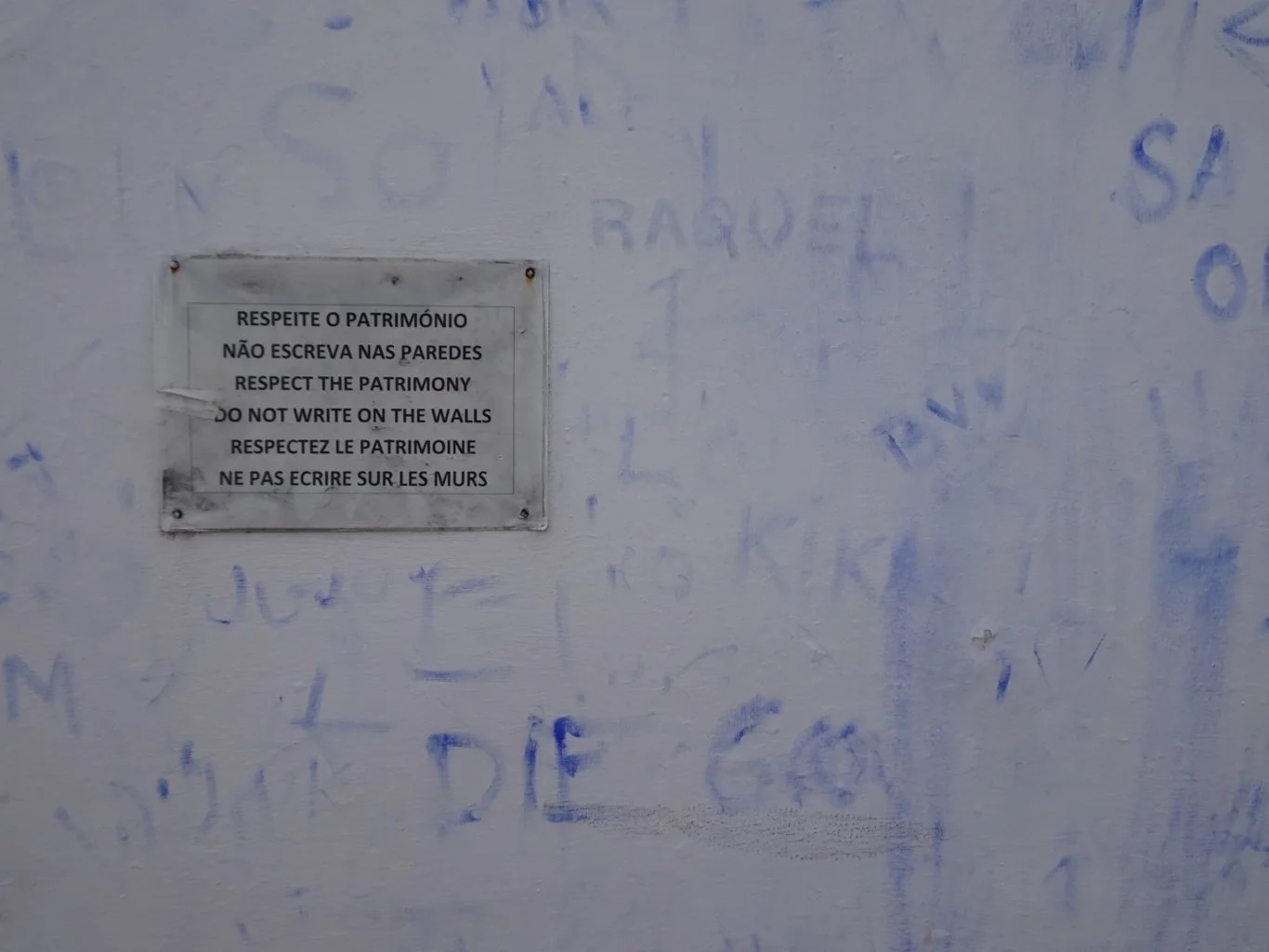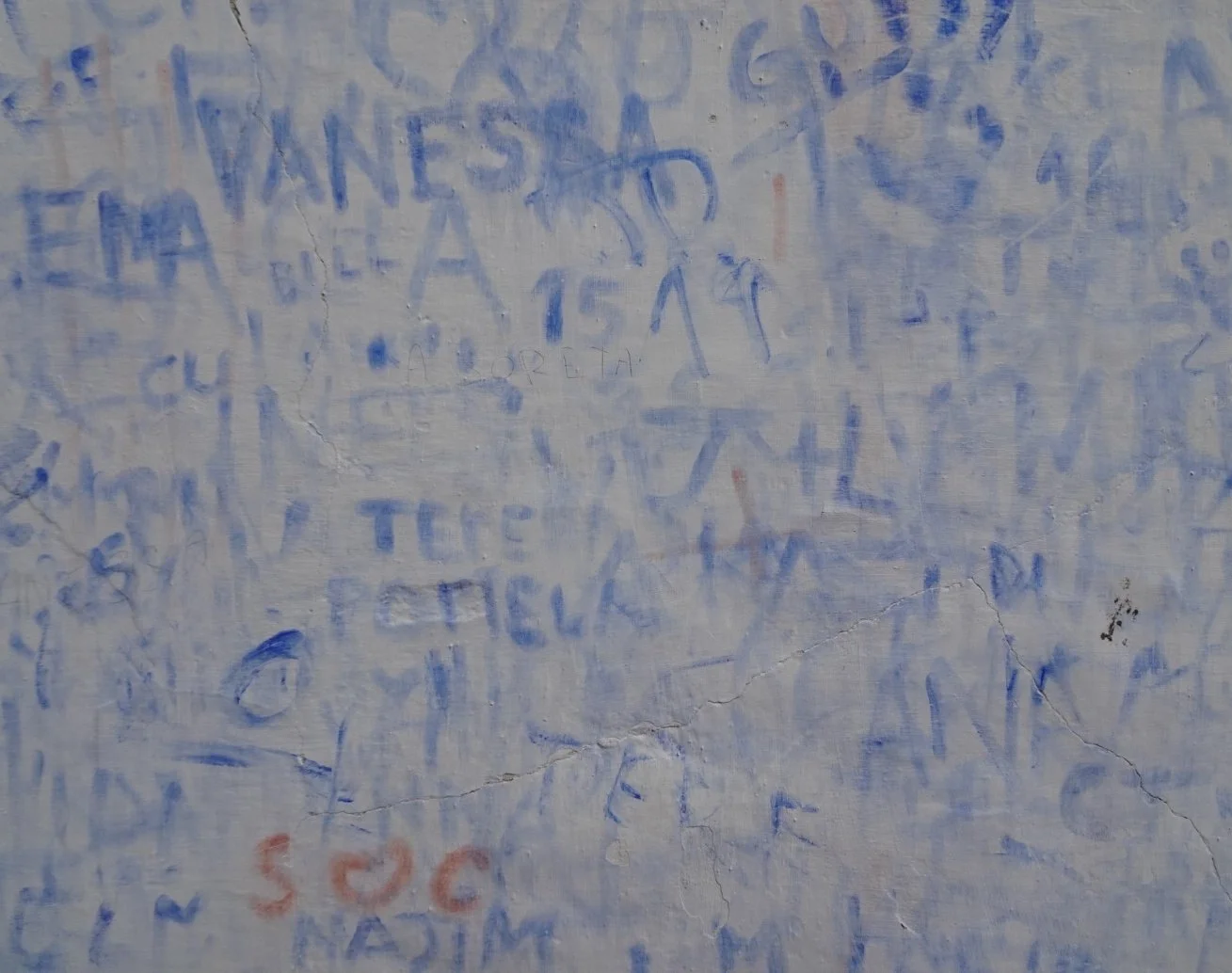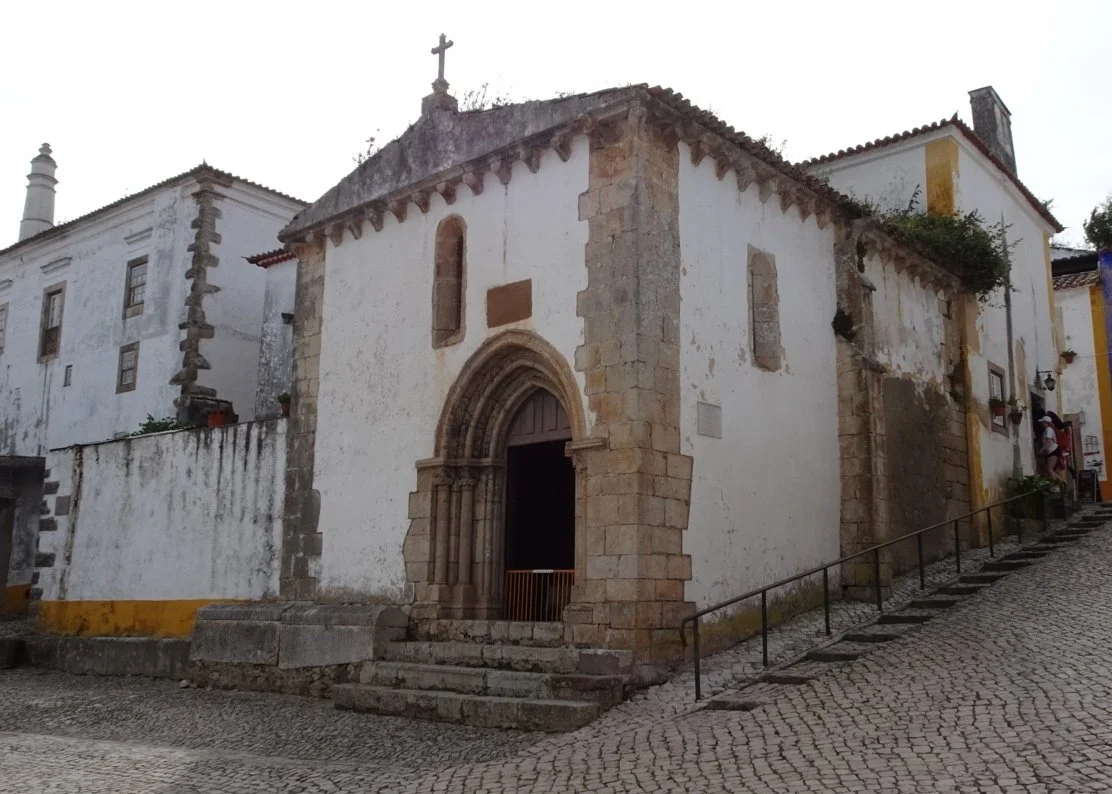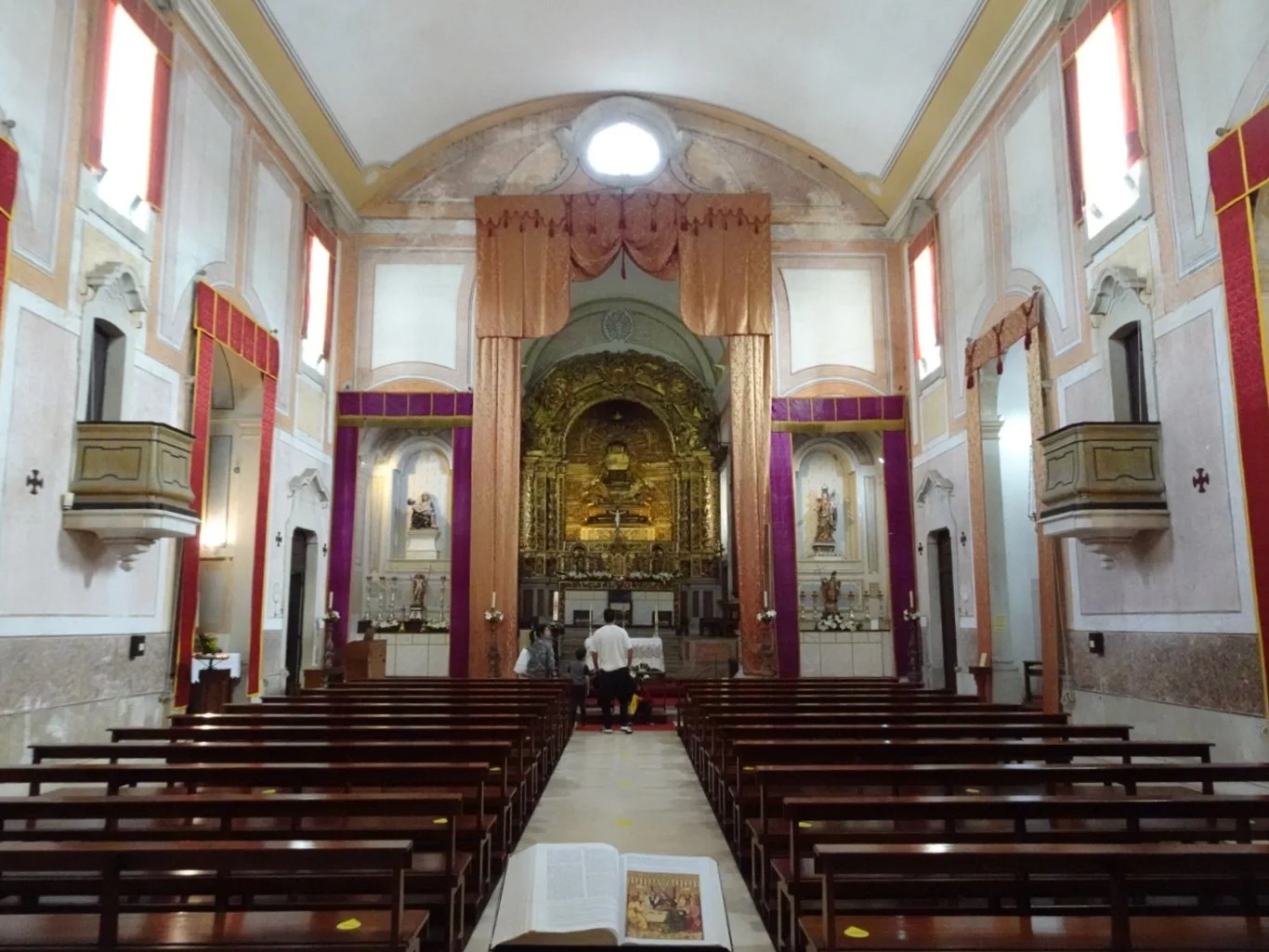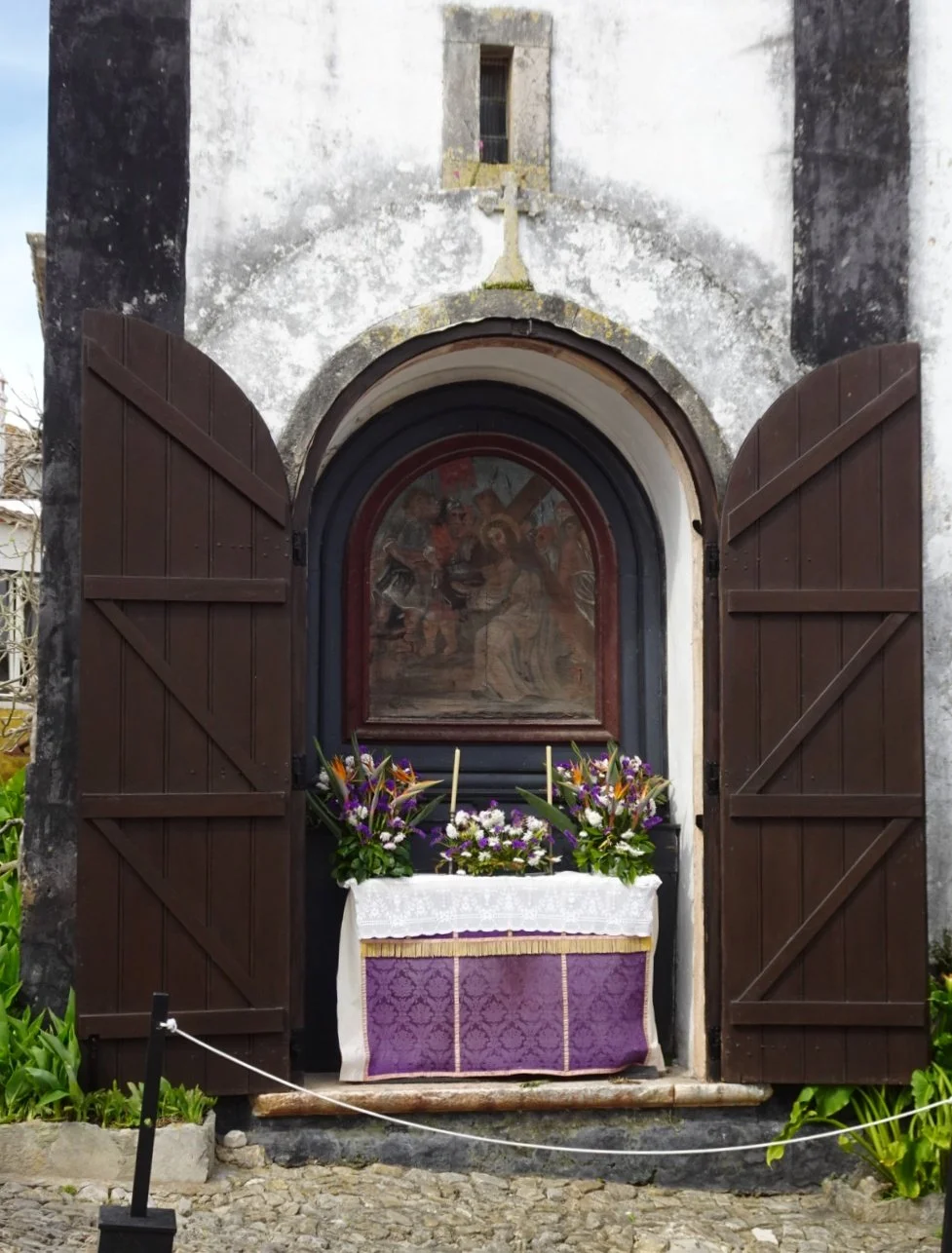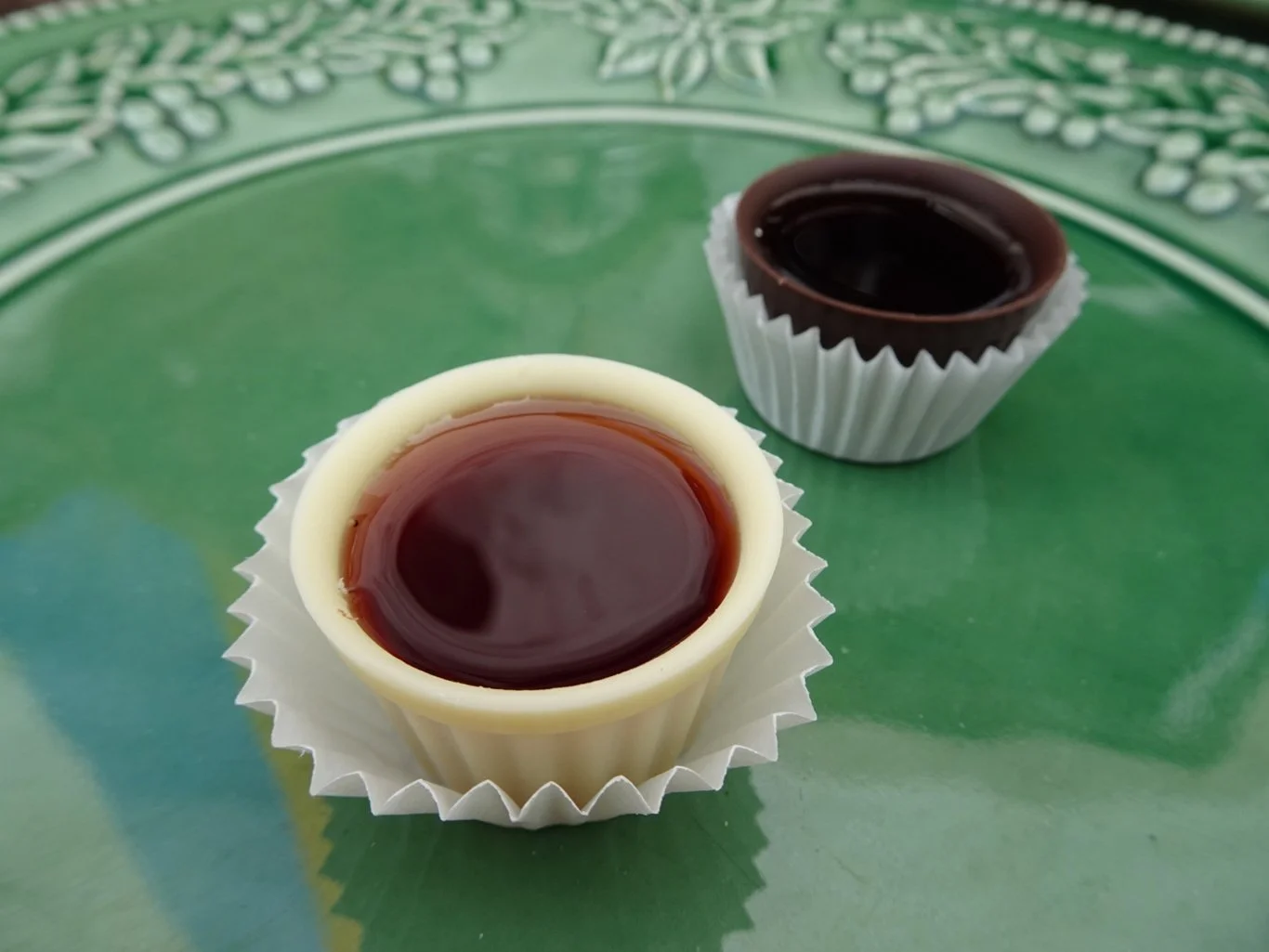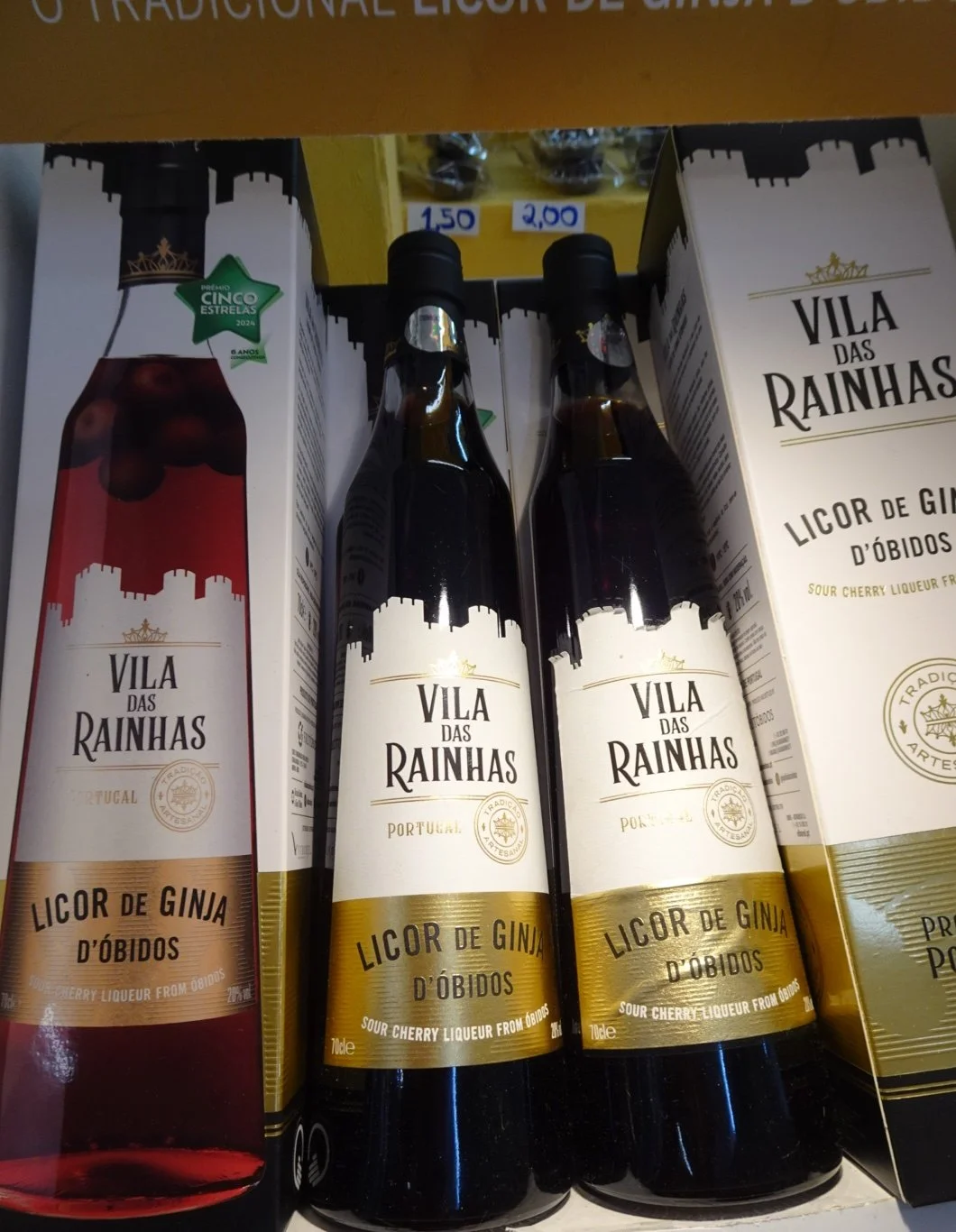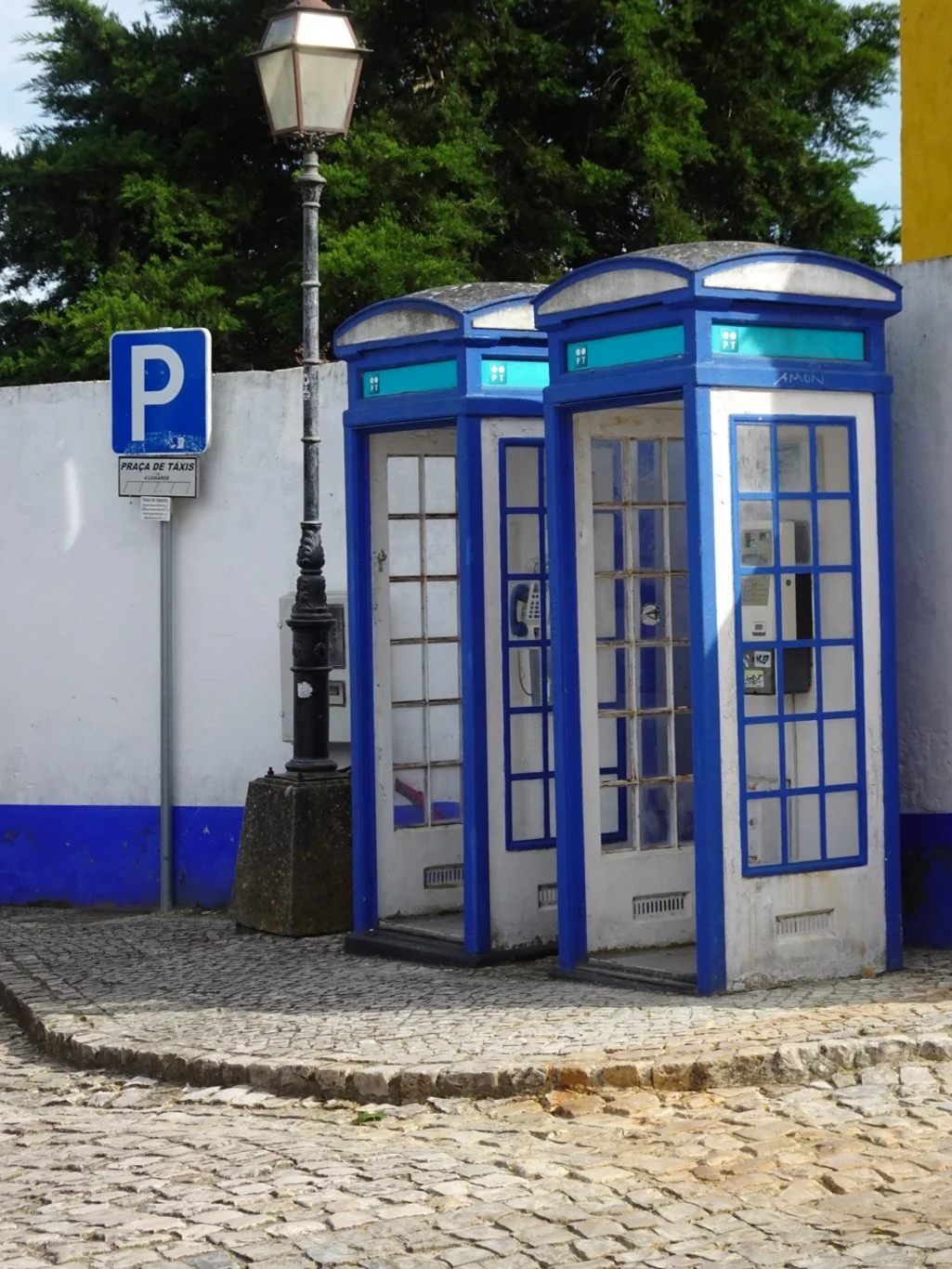Medieval Obidos
When choosing what to do in Lisbon, we deliberately looked beyond the city having been here for a few days some years ago. Here was a chance to see somewhere new - always an attractive option - and so we chose a walking tour of Medieval Obidos.
As we drove through the green landscape, peppered with small houses and the occasional windmill set amongst woodland and a few vineyards, our guide spoke about our destination. Obidos is a small walled town with 600 inhabitants about an hour and a half's drive from Lisbon.
As the town came into view, so did the ancient aquaduct which provided the water supply from a lagoon in the hills beyond.
Now, so clear and direct were her instructions and warnings, we wonder if this guide had “lost” some of her people on previous tours, for not once but several times did she check we all shared the same time, tell us the meeting point and the time agreed. Having checked that we all understood, repeating all of this yet again, she showed us to the end of the main street and gave us permission to go!
She gave us one piece of advice before we did, however. The local speciality is a cherry liqueur, often served in a chocolate cup and she encouraged us to give it a try. Her other warning was about the precarious pathway around the town's walls - if we chose to walk up there, we were to take extreme caution, for there had been several accidents from people falling from the walls.
When we saw the height of the pathway and the width of it - no fence or guardrail - my Hero and I thought we'd stay on terra firma! We'd spend our two hours exploring the small streets, we'd take a taste of the cherry liqueur and we'd simply enjoy being here. As a result, I have rather a lot of photos to share, some of which speak for themselves and need no explanation.
The entrance to the town is through this archway and the chapel outside - still decorated from the Easter celebrations - is one of several around town marking the Stations of the Cross. As we went through the dark archway, I could hear a woman singing…
I turned to the right as the archway opened up and to the lovely sound of “O mio Babbino Caro” the sight of this stunning tiled chapel appeared. Definitely “one of those moments”, even if the singer was no Maria Callas!
We walked up the main street, along the usual Portuguese white stone path towards the main square.
The white stones are inclined to be a little slippery, so many people took the option of walking in the centre of the street, where there was a single line of ordinary paving slabs. Were these covering the old channel where “water” had flowed in the days before drains? The jury is out on that one!
This “moorish blue” was the colour of today, together with yellow ochre. We'd been told another story: one that the Moors thought that the small flying insects thought that this blue was the sky, so painted it around their windows so the flies would stay beneath them. Hmm. Did people in those days understand about how insects see colour, do we think?
And it didn't really follow that here, the blue was painted at ground level, either.
More believable was the Moorish habit of placing pot holders on the walls outside windows in which scented plants could be grown.
I'm sure the Moors didn't hang their footballs in nets here though ;-)
There were many small side streets formed by steps up or down to another level.
And plenty of souvenir shops of course!
We can imagine our small grandson will soon be as attracted by some of these things as much as his father used to be (and Grandad too, I imagine!) His will surely be adorned with the colours of St George however 😉
Everywhere, the white paint had been “compromised” with blue…
A choice of pathways here. Shall we go up or down?
We took the downwards pathway, thinking we might rejoin the main street along the way, always taking care not to slip on those smooth stones.
The Wisteria is already in bloom in this sheltered spot. Glorious, isn't it?
And just around the corner too, against this ochre painted wall.
Red post or blue post?
Back in the main square then, having taken a rather circuitous route to return to the front of the Santa Maria church.
We stepped inside for a look around and were immediately captivated by the tiled porch.
Beautiful blue and white tiles from floor to ceiling.
The “shell” of Holy water just inside the door looked so lovely with the tiles too. But inside the church lay something very special.
A “carpet” created from coloured salt, another Easter tradition here.
I smiled at the small paw prints and guessed that the church cat hadn't been told to stay behind the ropes.
Leading right up to the altar, this was a real spectacle. We've come across similar sights in India, where coloured rice and flour have been laid in patterns for temple celebrations, but this was the first time I've seen such a thing in Europe.
Of course, the church itself was stunningly beautiful too.
The side chapels were lovely and outside was another of the Stations of the Cross.
Everywhere one looked in the town, there was another interesting view, a small vignette with small details to add character. We were so glad we'd come here and that we had enough time to wander and appreciate it all.
I know. sigh
Keeping an eye on the time, we came across the “other” little church.
Rather plainer inside than the one with the salt carpet, it was nevertheless beautful in an elegant sort of way.
Outside were some fascinating details too.
Together with another Station of the Cross.
Mindful of the time and remembering that we hadn't tried the cherry liqueur yet, we made our way back into the street of souvenir shops.
Two small chocolate cups of liqueur were sampled, together with the cherry on a cocktail stick - a bag was held out for the cherry stone and the paper wrapper as we knocked back the rather delicious liqueur.
A souvenir came home with us as we made our way back to the meeting point with enough time to notice the phone boxes here.
Well, of course they'd be painted blue, wouldn't they?
What a lovely way to spend our last afternoon. Obidos will stay in our memories as a charming small town indeed.







